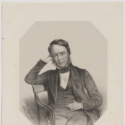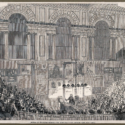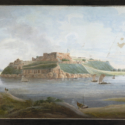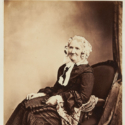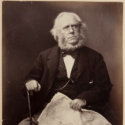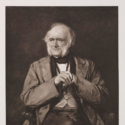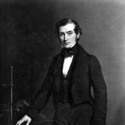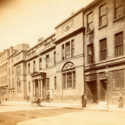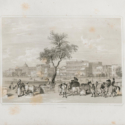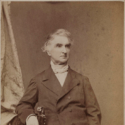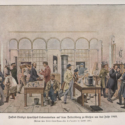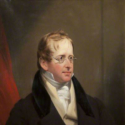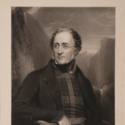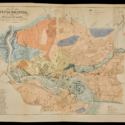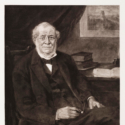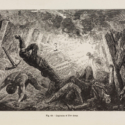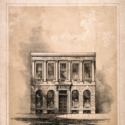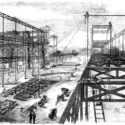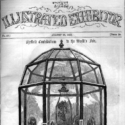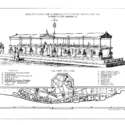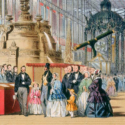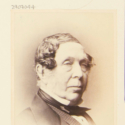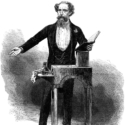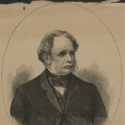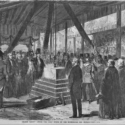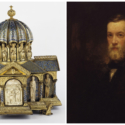Lyon Playfair: chemist and commissioner, 1818–1858
Abstract
https://dx.doi.org/10.15180/211504/001Lyon Playfair was a multi-talented man: a scientist, administrator and politician whose life and influence deserve further research. This article concentrates on the period between 1818 and 1858, from Playfair’s birth to his appointment as Professor of Chemistry at the University of Edinburgh. His biographer (Sir Thomas Wemyss Reid) described his life as a ‘story not of adventure, but work’ and yet his record was one of energetic enterprise that had considerable impact. He was a rising star in the then fashionable world of chemistry, a favoured student of the founder of organic chemistry, Justus Liebig, and a central figure in the promotion of new ideas in agricultural science.[1] A career in science and the state saw him connected to the leading figures of both, and he played a crucial role in the conceptual and financial success of the Great Exhibition, and its legacy. His brilliance has been overshadowed by the extrovert Henry Cole, and yet Playfair was essential to the major educational reforms of their time.
Keywords
Biography, chemistry, Great Exhibition, Justus Liebig, Lyon Playfair, politics, University of Edinburgh
Introduction
https://dx.doi.org/10.15180/[2] Playfair was a versatile man: scientist, administrator and politician. This article concentrates on the period between 1818 and 1858, from his birth to his appointment as Professor of Chemistry at Edinburgh. His biographer (Sir Thomas Wemyss Reid) described his life as ‘a story not of adventure, but work’ and yet this restrained sketch hardly does justice to an early life which was one of energetic enterprise that had considerable impact (Reid, 1899). A rising star in the ascendant field of chemistry, and connected to its leading figures, Playfair played a vital role in the success of the Great Exhibition and it legacy. His brilliance has been overshadowed by the extrovert Henry Cole, about whom much has been written.[3] However, Playfair was just as essential in ensuring the legacy of the Great Exhibition and the major educational events of their time.
Despite such a rich contribution to national life, there is only one biographical work, which was published in 1899, and it is an uncertain compound of sketchy autobiographical notes and biographical commentary. It was undertaken by Reid at the invitation of Edith, Playfair’s third wife, who put at Reid’s disposal her husband’s correspondence and an incomplete essay in autobiography, written by Playfair ostensibly for his family (Armstrong, 1976).[4] It comprises Playfair’s own notes which are then duly marshalled into ‘chapters’ with introductory or concluding commentaries (not always with a clear logic to their form) from Reid. Furthermore, Playfair’s own notes are patchy in their chronology and completeness.
The work might also be considered problematic in its perspectives. In particular, it has been argued that Playfair is consistently characterised as useful rather than great, suggesting certain underlying assumptions of the biographer. For Reid, Gladstone was the measure of greatness and against such a benchmark it would be scarcely possible to perceive Playfair’s full importance. Indeed, the biographer was unlikely to appreciate the lasting contribution of Playfair in the organisation of science, and its legacy into the twentieth century (Crowther, 1865).
Playfair was only 40 when he left London for an academic life at Edinburgh University, although he did not withdraw from abiding interests in cultural educational reform. However, this transitional moment in his career does offer an opportunity of considering a surprising visual impression as well, because if Playfair comes to mind today at all, the image is of a grand statesman photographed in pompous and be-whiskered pose; and yet the man in this account is brimming with youthful vitality and has the air of a Romantic poet or composer.
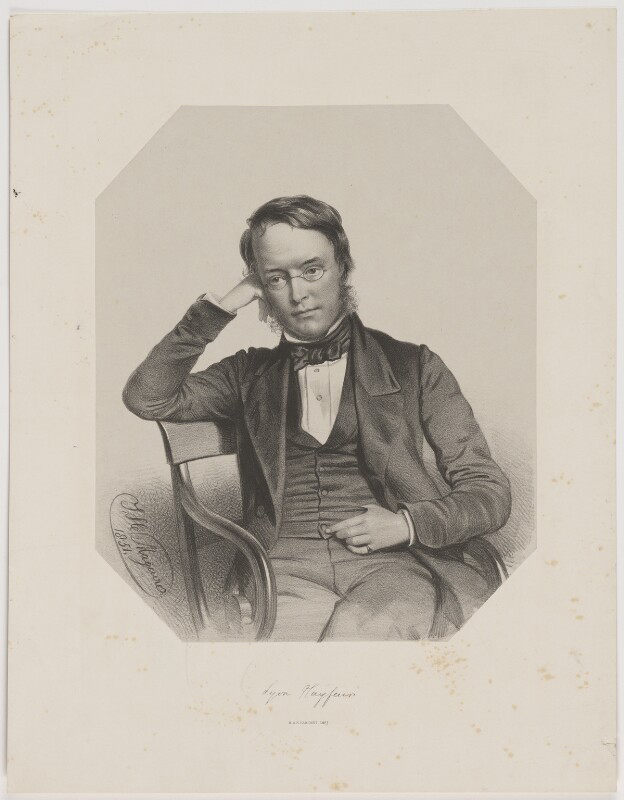
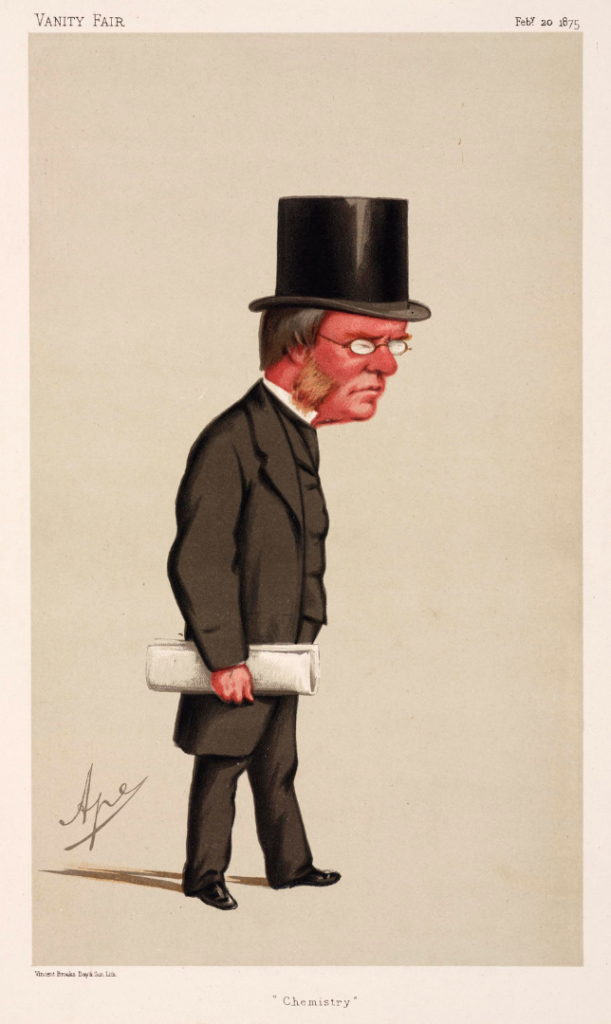
It would be fair to say that Henry Cole has some dominance in the narrative of the Great Exhibition, and the formation of the cultural institutions that followed. Cole was most certainly the ‘Great Exhibitor’ and yet his alliance with Playfair, for all its stresses and strains, was a partnership of equals in the 1850s. There was both friendship and jockeying for position in the realisation of the Great Exhibition and its legacies (Bonython and Burton, 2003). Each man brought their own strengths, and I will argue here that for all of Cole’s flair as an impresario, the Great Exhibition might well have been a diminished affair, indeed possibly a failure, without Playfair’s charm and diligence.
In seeking to rebalance the Great Exhibition narrative it may be hard to avoid the perils of any ‘corrective’ biography. In his recently published biography of Viscount Haldane, John Campbell declares his motivation for writing thus:
Haldane has largely been forgotten today, lost behind a range of his contemporaries whose personalities are more instantly accessible and whose deeds are more easily amplified – individuals such as Lloyd George and Churchill (Campbell, 2020).
In seeking ‘equivalence’ between such contrasting figures there is risk that biography, despite a range of good intentions and fascinating material, can almost inevitably slip into hagiography. In considering Playfair, a different objective might be to present him simply as an inherent subject of interest because ‘biographies can contribute to the construction of a critical and historically informed constellation of public opinion’ (Renders and Harmsma, 2017). In this case, it could be suggested that any biography of a scientist places science in the foreground of an historical and cultural landscape replete with political and artistic lives. In this vein, examining Playfair might play a part in a ‘science as culture’ campaign.
Furthermore, examining Playfair offers much more than a competition with Cole. A hallmark of Playfair’s career was spirited lecturing on education, industry and the prestige of chemistry itself. Prince Albert encouraged the Royal Society of Arts to host a series of lectures in 1852 in which leading figures of the day reflected on the lessons to be drawn from the Great Exhibition. With confident partisanship, Playfair would not resist the temptation to praise his beloved science because:
It is one of the last of sciences which, as a branch of systematised knowledge, has offered its services to man, yet during its existence as a separate science, it has increased human resources and enjoyment to a greater extent than any of its elder sisters (Reid, 1852).
A bold claim indeed, but I hope to show that Playfair’s early career laid the foundation of his central role in the rising prominence, and perceived economic utility, of chemistry.
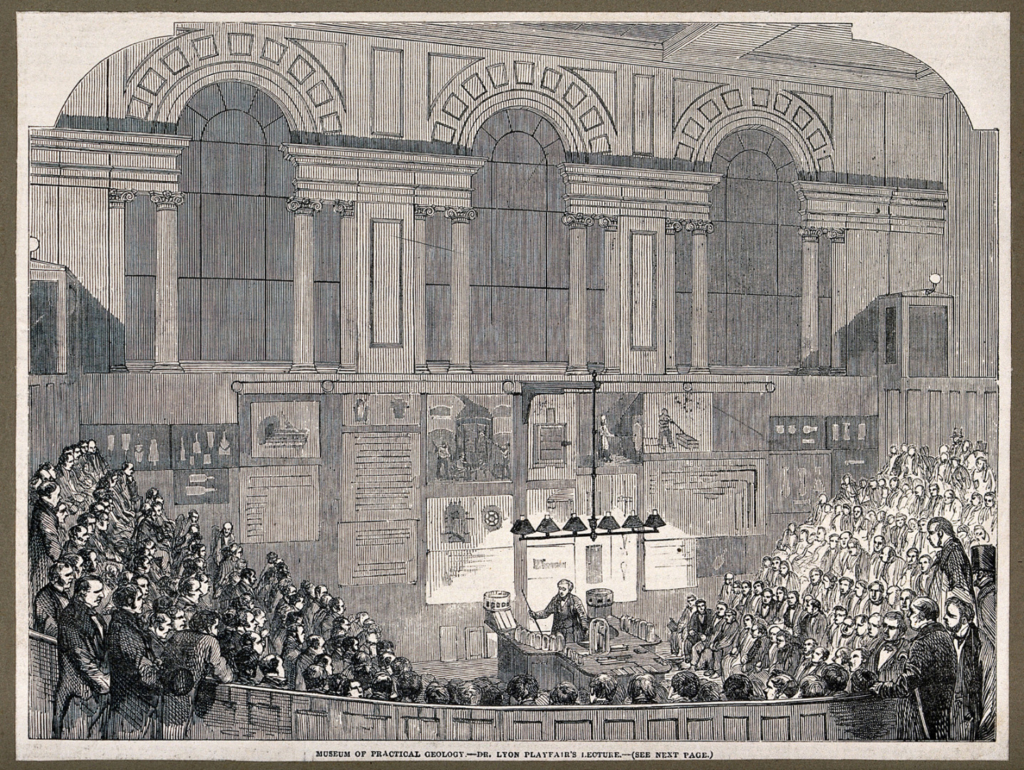
Finally, in considering the influence of Cole and Playfair, the narrative must also take account of a third and dominant player, Prince Albert. Playfair and the Prince were of an age, having been born in 1818 and 1819 respectively, and thus both a decade younger than Cole. Here I argue that the high degree of mutual sympathy between the two men was only partly about age, and more the product of Playfair’s intense pragmatism and, significantly, his fluency in the German language and cultural framework.
A child of Scotland and India
https://dx.doi.org/10.15180/211504/002When Playfair was ennobled in 1892, he adopted the title of Lord Playfair of St Andrews, and that university city certainly played a central role in the ancestral identity of the Playfair family, with his grandfather James being appointed Principal of the university in 1800.
In fact, Playfair was born far from his spiritual Scottish home, in Chunar in Upper Bengal (now Uttar Pradesh) in 1818, the second child of George and Jessie Playfair. His father was a surgeon in the service of the East India Company and later became Inspector-General for hospitals in Bengal. His uncles William and Hugh were officers in the Indian Army, and Uncle James was a Glasgow merchant. The latter was to play an early, but uncontented, role in Playfair’s career.
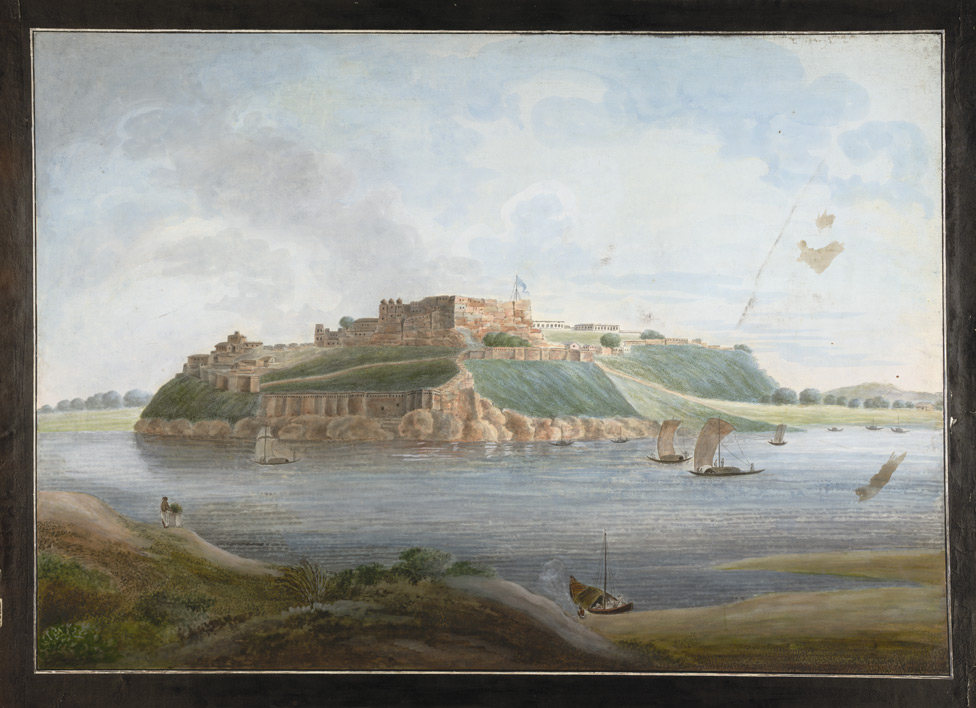
Playfair was sent to Scotland, with his mother and elder brother George, in 1820 and raised in St Andrews in the household of his widowed aunt Janet Macdonald. His Memoirs brim with sentiment about his childhood (Reid, 1899). He reserves special affection for his Aunt ‘Jessie’ and her warm encouragement of curiosity and study. She was a keen naturalist and Playfair claims that she was credited with describing several new species of marine animals. His education was guided by two governesses, and then the parish school and local grammar.
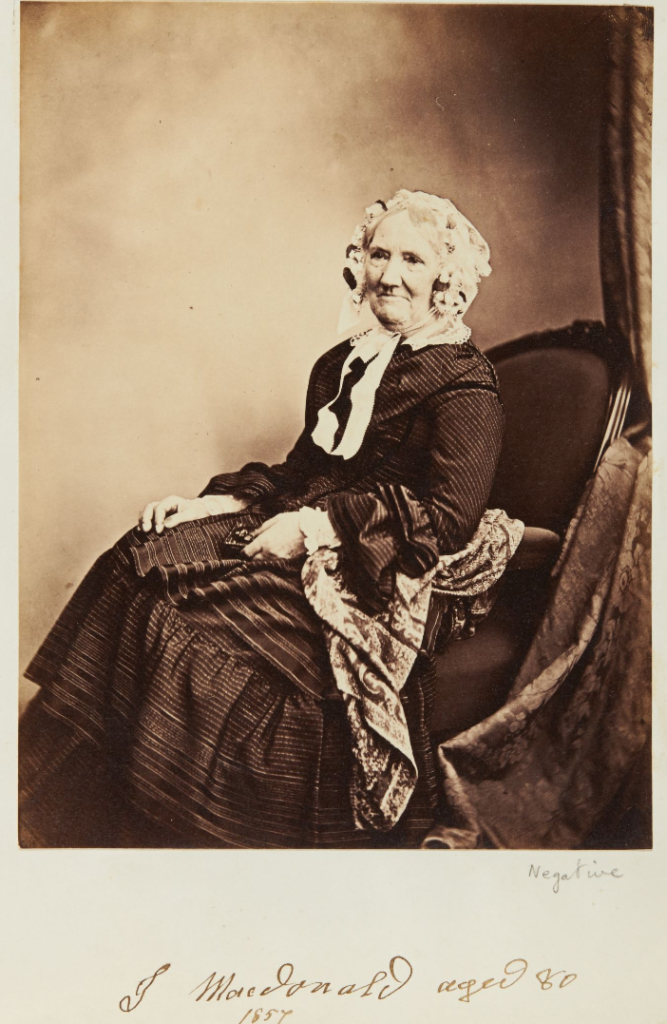
At only 14 years of age (Reid, 1899, p 33), Playfair was enrolled as a bejant (first year student) at the University of St Andrews where he complained of the impenetrable ‘slough of despond’ in the mathematics lectures of Professor Duncan and endured his ‘absolute ignorance’ in Greek and similar imperfections in Latin.[5] Surprisingly, given his later career, he was not enrolled in Chemistry or Natural Philosophy although he recollected stealing into lectures, nonetheless. Playfair and his brother George delighted in driving the servants to distraction with experiments such as the extraction of sugar from beetroots (Reid, 1899, p 33). Such endeavours were to produce dividends for both men, with George later following the family path to India and becoming President of the Medical College at Agra.

At the age of 17, this juvenile period of Playfair’s life ended when his mother returned to India with her daughters. George was sent to Edinburgh to study Medicine and the family decided that Lyon should try a career as a merchant, and so he was despatched to Glasgow as a clerk to his Uncle James (Reid, 1899, pp 34–36). His uncle was frequently in Canada and Lyon was bored for ‘this idleness disgusted me with the mercantile life’. Moreover, the household was one of ‘arid Scotch orthodoxy’ which he found ‘repulsive rather than attractive’. However, with hindsight he appreciated his uncle’s probity and commitment to public welfare and he also enjoyed the friendship of his fellow clerk Ramsay, whose brother would become the distinguished geologist Sir Andrew Ramsay.[6] Andrew (only four years his senior) was later to become a close friend and indeed a recurring theme in Playfair’s career was his great esteem for the eminent and emerging geologists of the day.
Playfair prized his copy (won at school) of Charles Lyell’s pioneering Principles of Geology (1830–33) with its radical notion that the forces that had shaped the planet’s surface were still in operation, a theory that had dangerous implications for biblical constructs of time. On making an annual trip to Arran with Andrew Ramsay, Playfair fell into conversation with Lyell and his wife while on the same steamer and so ‘my hero-worship had its reward’ (Reid, 1899, p 36).

Starting on the scientific path
https://dx.doi.org/10.15180/211504/003In 1835, Playfair gave up his (first) attempt at a mercantile career and set a path studying medicine, a profession that was prominent in lives of the wider family.
He decided to study at the Andersonian College (now Strathclyde University) rather than Glasgow University, thus declining the opportunity of studying with the eminent Dr Thomas Thomson, whose System of Chemistry (1802) was an established textbook for the subject. Instead, Playfair favoured ‘a younger man’ whom he regarded as one of the most original investigators of his time (Reid, 1899, p 36). Professor Thomas Graham offered relative youth (he was 30) and a growing reputation as an original investigator in fields such as dialysis, and the diffusion of gases.[7] It was a decision that was to give Playfair considerable intellectual satisfaction and the link with Graham later proved an asset in his career. Additionally, for a young man it was also a golden period with fellow students and life-long friends including the explorer David Livingstone, and the inventor and founder of the paraffin oil industry James Young (Reid, 1899, pp 36–37).
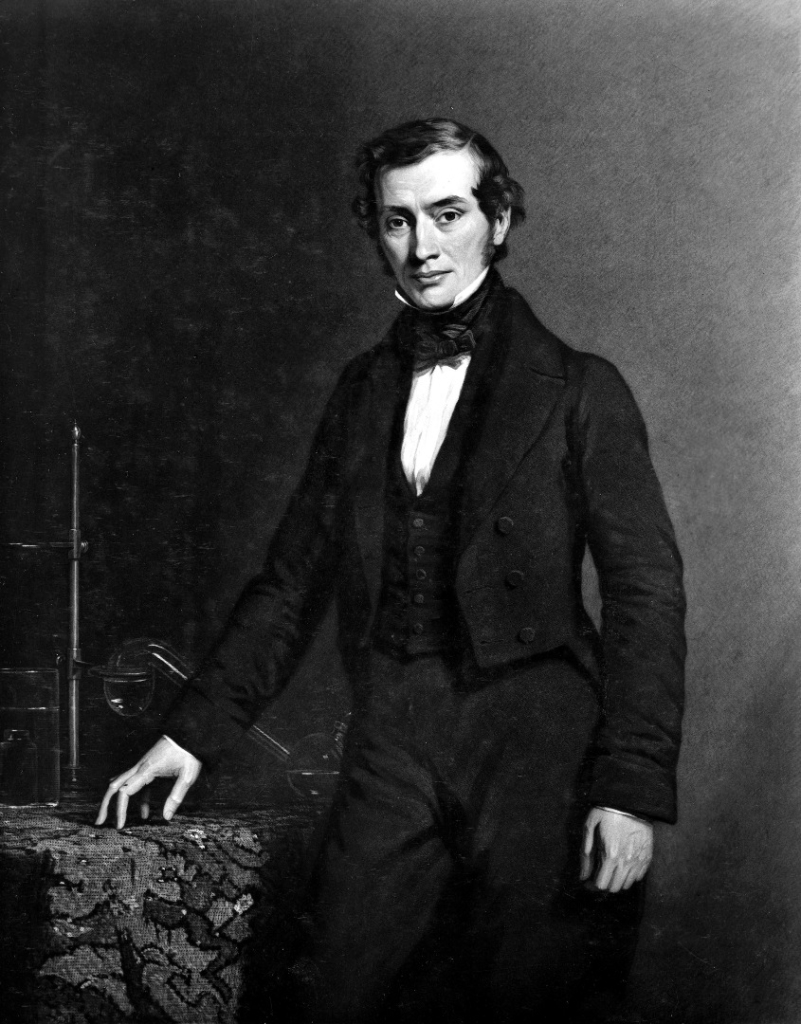
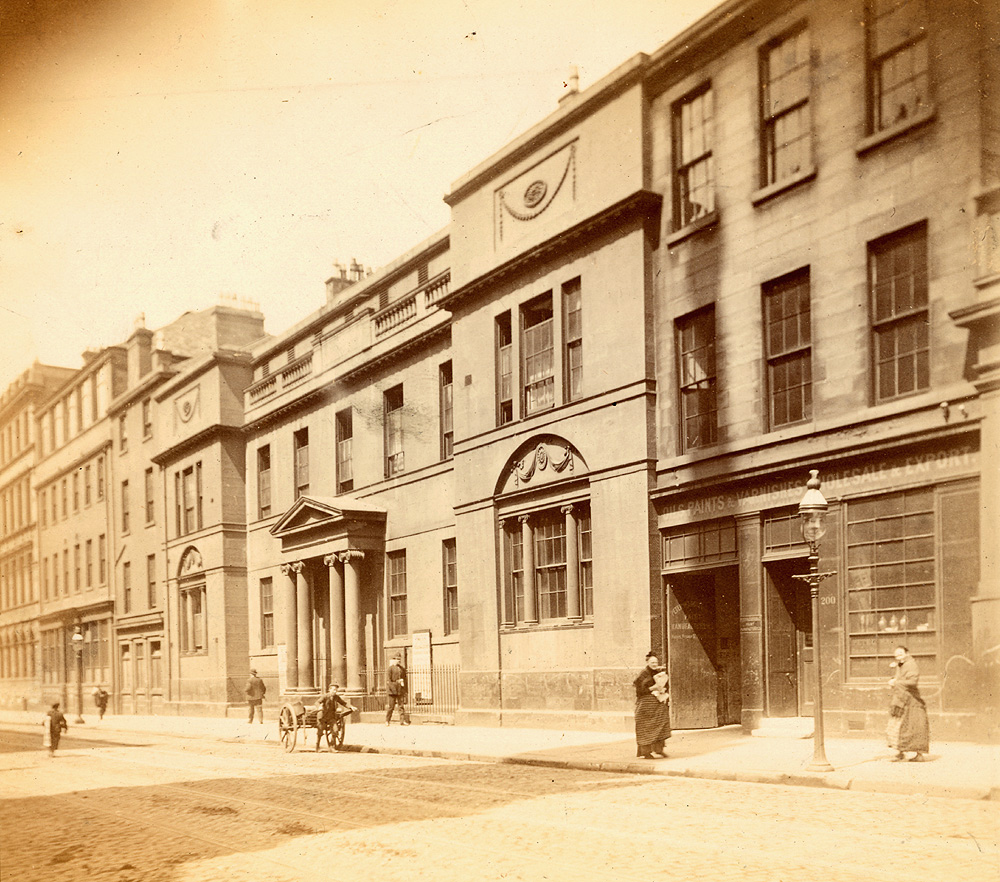
Two years into the course, Graham moved to University College London and so Playfair decided to complete his studies at Edinburgh, conscious that his anatomy and surgery were being neglected at the expense of his passion for chemistry. However, any return to sensible studies suffered a decisive setback because Playfair was forced to abandon his medical course as the atmosphere of the dissecting rooms and hospital produced such a violent eczema (Reid, 1899, p 40).[8]
Playfair described himself as ‘stranded’ at 19 years of age, and the paternal solution was to despatch his son to Calcutta to follow a mercantile career in the house of Cantor, Low and Co, on the understanding that Playfair should become a partner in due course. This second foray into business hardly seemed destined for great success and Playfair sought solace in friendships with ‘all the scientific men in Calcutta’ despite his relative youth (Reid, 1899, p 41).[9] He enjoyed the friendship of Sir William O’Shaughnessy, Professor of Chemistry at the Medical College, and as the unsuitability of his new career was evident, several of his scientific friends wrote to his father urging that young Playfair might be better deployed in studies under Professor Graham in London. George Playfair agreed, the whole matter settled by correspondence alone, for the duration and perils of travel in the interior meant that father and son did not meet whilst in the same country.
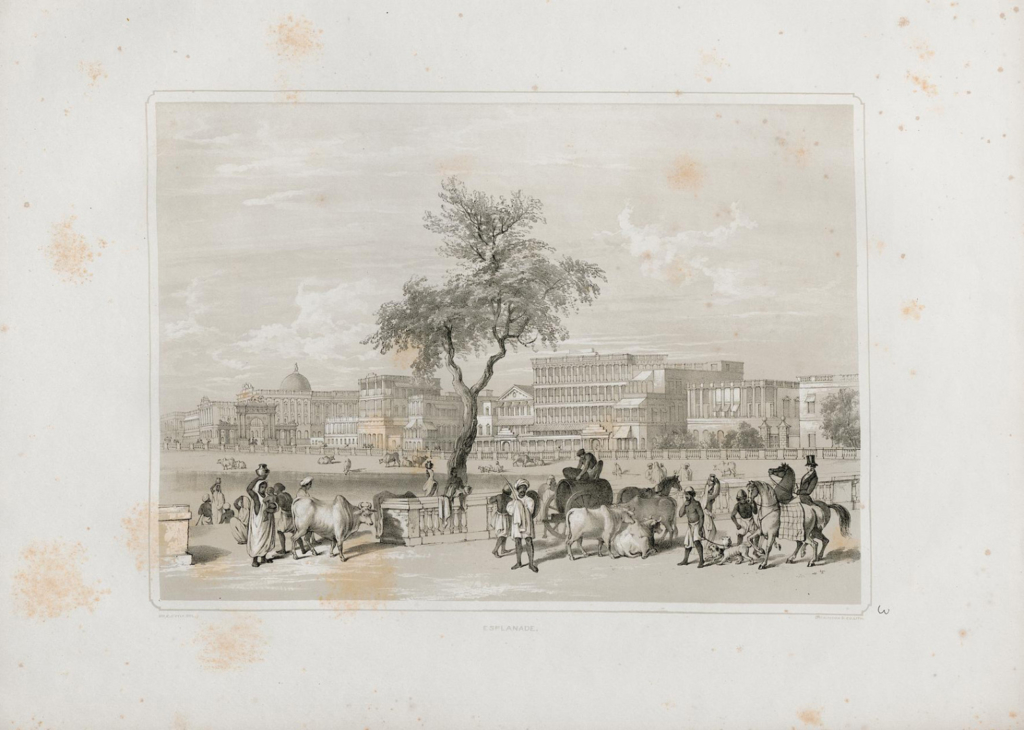
Playfair duly found himself back in London and this time as Graham’s private assistant rather than student, but he was not to stay for long. In 1839, Graham offered what was to be career-defining guidance: that Playfair should go to Giessen to study under Justus Liebig, one of the commanding figures of Continental chemistry.
Organic chemistry and networking
https://dx.doi.org/10.15180/211504/004Graham’s wise advice to transfer to Giessen reflected the failings of British scientific training. In 1830, Charles Babbage had penned his furious criticism of the Royal Society and the general feebleness of education in Reflections of the Decline of Science in England. Although the nation was renowned for ‘star’ scientific achievers, there was a chronic dearth of technical schools and the scientifically adept at all levels of industry. One immediate response was the formation of the British Association for the Advancement of Science, as a stinging rebuke to the perceived dilettantism of the established order (Cardwell, 1972).

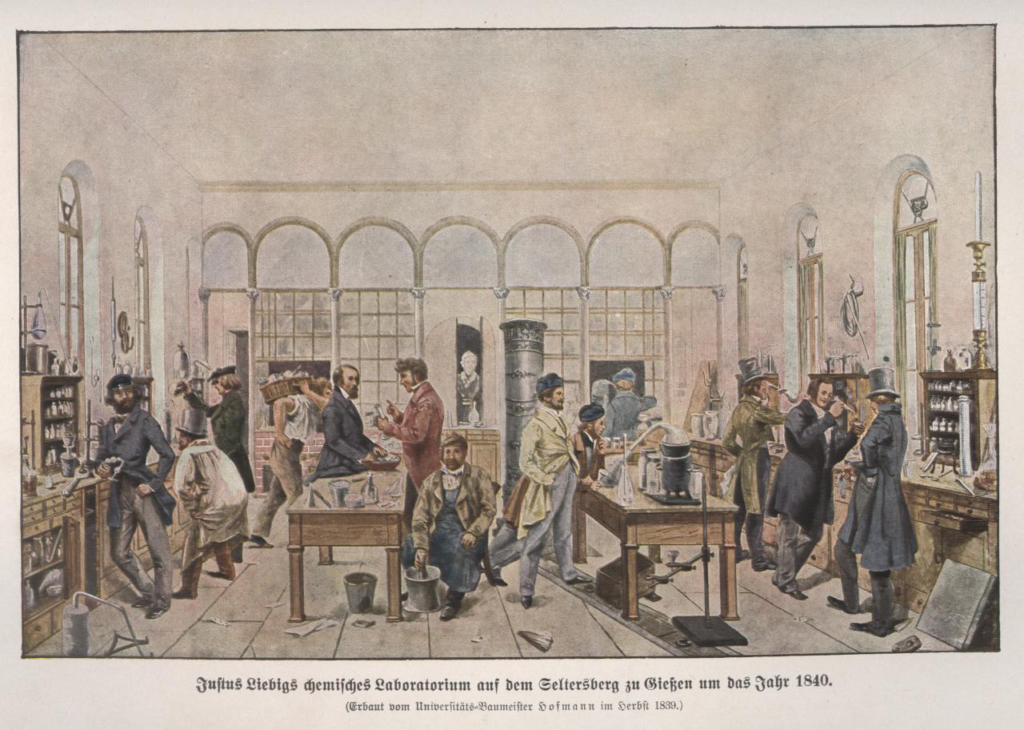
It had become standard practice for young chemists to travel to Germany to complete their higher education, with the most prized teachers being Liebig in Giessen and Bunsen at Marburg (and at Heidelberg from 1852). Liebig himself was mystified by parochial English attitudes to science. When he undertook a prestigious tour of England in 1842 (on which Playfair accompanied him), Liebig wrote to Michael Faraday that:
…only those works which have a practical tendency awake attention and command respect, while the purely scientific, which possess far greater merits, are almost unknown (Cardwell, 1972, pp 64–65).
In Liebig, his students encountered brilliance and rigour. The modestly sized laboratory was to train a raft of leading chemists, in a culture of lernfreiheit, in which students were encouraged to propose and conduct original research. Liebig was to be described by the Royal Society as ‘the founder of Organic chemistry’ and his research had a compelling impact on our understanding of soil fertility, yields and agricultural costs (Royal Society, 1875–76). In 1837, at its meeting in Liverpool, the new British Association for the Advancement of Science urged him to present and consolidate his insights, and this was the central focus just as Playfair joined his laboratory. In 1840, Liebig completed the seminal Organic Chemistry in its Application to Agriculture and Physiology.
Not for the first time, Playfair’s congenial manner, which had won the friendship of Thomas Graham and the scientific circles of Calcutta, ensured a warm collegiality with his new mentor. This was certainly not true for all who studied in Giessen because Liebig could be exacting and was known for his ‘haste, impatience and dictatorial attitude’ and only a special few found favour (Fruton, 1988).
There could no clearer evidence of respect than Liebig’s remarkable request that Playfair translate his landmark work for its English edition. Whilst his command of German was patchy, Playfair recognised the privilege bestowed and immersed himself in translation of a new scientific field.
Liebig was delighted with the quality and lucidity of the translation, writing that ‘your explanations are clear and easily understood’ and ‘I am exceedingly pleased and satisfied’ (Playfield, 1899).[10] And Liebig repaid Playfair’s dedication with glowing praise of ‘that intelligent young chemist’ in the English edition:
I cannot suppress the wish that he may succeed in being as useful, by his profound and well-grounded knowledge of chemistry, as his talents promise (Liebig, 1847).
And so Playfair became, by default, the advocate of choice for Liebig’s masterpiece before an English audience and he represented him at important scientific gatherings. It is difficult now to capture the vicarious power associated with such a role, for the word of Liebig was hugely esteemed in England, which he was to visit six times between 1837 and 1855 and where he was admired as ‘an entrepreneur and propagandist for the extension of chemistry’s boundaries’ (Brock, 1977). It was at these events that Playfair was to meet ‘several men who afterwards exercised a considerable influence upon my life’ (Reid, 1899, p 43). Such men as the geologist and palaeontologist William Buckland and the head of Geological Survey, Sir Henry de la Beche. The Liebig book was a remarkable work, brimming with the excitement of a new field of scientific endeavour, and with a poetic and prophetic style speaking of how ‘plants thus improve the air, by removal of carbonic acid, and the renewal of oxygen, which is immediately applied to the use of man and animals’ (Liebig, 1847, pp 19–20).
This major work resonated in political and land-owning circles. The British population would almost double from 1801 to 1841, rising around 11 million to approaching 20 million (Journal of the Statistical Society of London, 1854). Efficiency in production was needed for an increasing population and one that was shifting from country to city; for the England of Constable’s ‘The Hay Wain’ (1821) was becoming that of Turner’s ‘Rain, Steam and Speed’ (1844) and politically the changing nation was reflected in the seismic passing of the Great Reform Act of 1832. Anxieties around food production and pricing, and proxy wars on both sides of the Corn Laws debate, were reflected in the foundation of the Royal Agriculture Society of England in 1838, and appropriately Playfair was to be appointed as their consulting chemist in 1844 (Brock, 1977, p 149).
In Lancashire and Manchester
https://dx.doi.org/10.15180/211504/005Having completed both the English translation of Liebig’s great work, and his own doctorate, Playfair needed to make his way in the world. During one visit to a British Association meeting in Glasgow, he met James Thomson, owner of extensive calico printing works in Clitheroe, and was duly offered the position of chemical manager in his Primrose mills on the very decent annual salary of £400 rising to £600 per annum.
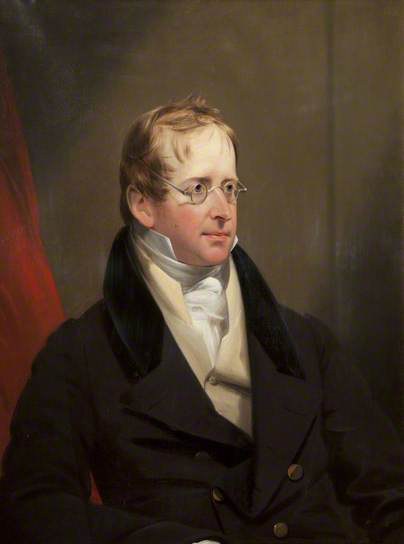
Calico printing represented the upper tier in the largest manufacturing industry in the land (cotton), and whilst the majority of works in Lancashire produced cloth for the mass market, a small number produced a more exclusive range. The huge scale of such works, in terms of buildings and workforce, were a wonder to many. No less exciting was the manufacturing process itself and when Augustus Granville, Italian patriot and physician, visited the Thomson works he marvelled at the process:
Which converts some thousands of yards of cotton cloth, previously bleached and prepared, into a surface covered with curious and tasteful designs, and rivalling for colour and brilliance the plumage of a tropical bird, is almost, magically instantaneous (Granville, 1841).[11]
This was luxury production, in the hundreds rather than the millions, and whilst Playfair admired the quality, and the personal integrity of his employer, he was soon worried that the product line was old-fashioned and urged a more pragmatic business approach. Within a year, Playfair was convinced that the business was doomed, and he was further tested by the great labour riots of August 1842 as they swept over the county. Almost every mill had been forcibly closed and only two mills, one of which was the Thomson enterprise at Primrose, remained open. At one stage Playfair himself offered ‘to parley’ with rioters descending on the mill at Oakenshaw and dissuaded them from violence (Reid, 1899, pp 54–55).
During his time in Lancashire Playfair had given several lectures at the Royal Institution in Manchester and was eventually offered a position as Honorary Professor of Chemistry. His lectures were popular and attracted large audiences, including the elderly and legendary John Dalton (chemist, physicist and pioneer of atomic theory) whose kindness extended to offering Playfair presentation copies of Dalton’s key scientific works (Reid, 1899, p 57). During this period Playfair also befriended James Joule, a pioneer of thermodynamics, another leading light in Manchester’s lively scientific culture (Reid, 1899, p 73).
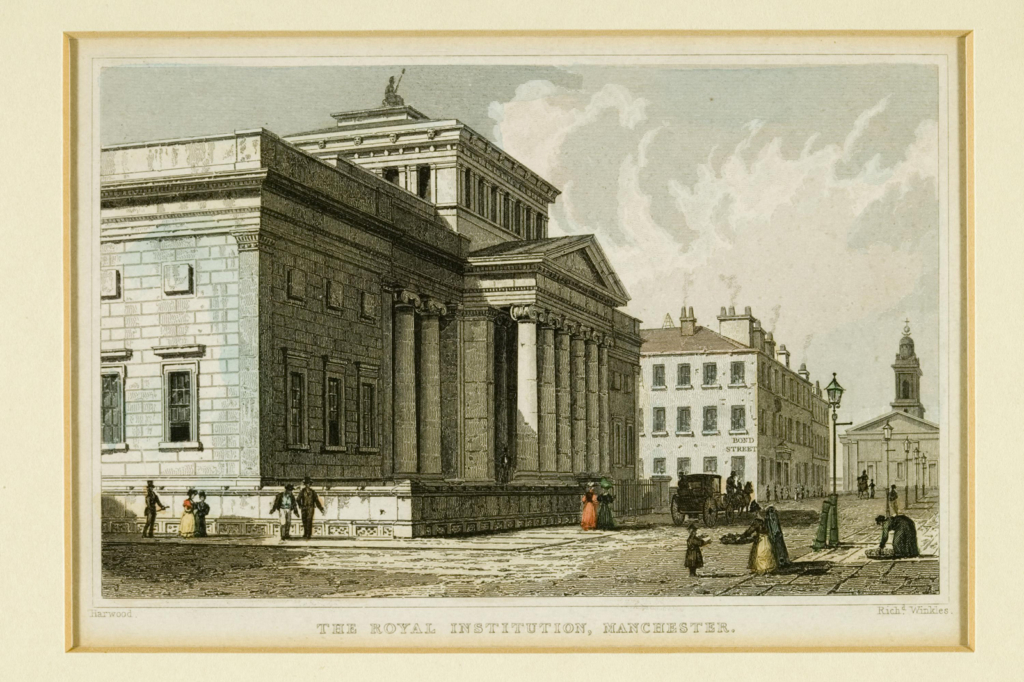
However, Playfair’s eagerness to develop a wider scientific life caused friction with his employer, although these tensions are entirely absent from Playfair’s own account of this episode in his life (Bud, 1980).[12]
Thomson had offered Playfair a salary that was generous in comparison with those paid by other mill owners and this may have reflected his two hobby horses: the high quality of the laboratory and library he had created, and a controlling attitude to Playfair’s research. Thomson had fought a successful campaign for the copyright protection of his upmarket designs and Playfair wrote to Liebig with the wry note that his employer would not allow him to publish anything that Thomson could ‘turn to account’ (Bud, 1980). Playfair also wrote to his friend Andrew Ramsay suggesting that ‘I expect a blowing up for having given that lecture in Manchester as he is dreadfully jealous about my thoughts turning to pure science’ (Playfair, 1842).
Playfair later resigned from the Thomson business and shortly thereafter it folded, as he had feared. Whilst his third venture into business, after his unhappy experiences in Glasgow and Calcutta, had not been successful, he later reflected that this experience of manufacturing was to stand him in good stead and I suggest that this empathy with the world of business was to prove invaluable in the practicalities concerning manufacturing submissions for the Great Exhibition.
1842 was a troubling year for Playfair. Whilst the professorship at the Royal Institution offered a scientific life, it was unpaid, and he had just resigned from the Thomson works. He reflected in his Memoirs that he had ‘considerable difficulty to make both ends meet’ (Reid, 1899, p 59). One might speculate that Playfair’s difficulties in building a coherent and financially sustainable scientific career might lie at the root of his passion for educational reform, which was to emerge over the next decade.
Saved for England
https://dx.doi.org/10.15180/211504/006A propitious proposal arrived just at this moment of drifting uncertainty. In October 1842, Playfair received a most unexpected letter from Michael Faraday, whom he had never met, but who was then at the height of his powers at the Royal Institution in London.
Faraday had been asked by the Governor of Upper Canada to find a suitable candidate to fill the chemistry professorship at King’s College, Toronto; and Thomas Graham had recommended Playfair to Faraday. The offer, both in terms of salary, accommodation and laboratories was very tempting (PCP, 1842). Playfair went up to London to see Faraday and indicated that he was minded to accept.
This development provoked some consternation at the most senior levels of the scientific establishment, for such a departure might be a grave loss to the country’s intellectual capital (Reid, 1899, p 80).[13] Henry de la Beche fired off an urgent note to the geologist William Buckland urging him to lobby the Prime Minister about such a serious matter because ‘if Playfair is to be saved for England, there is no time to lose’ (PCP, 1842).[14] Buckland duly acted and so Playfair found himself receiving a personal invitation from the Prime Minister, Sir Robert Peel, to visit him at his country seat, Drayton Manor. It was quite a gathering for also in attendance were Buckland, the Duke of Newcastle and several leading figures in the agricultural world (Reid, 1899, p 59).[15] Peel urged him to stay in the country and assured Playfair that he would ‘make it his duty to obtain for me employment if any vacancy occurred which he might think suitable to my abilities’ (Reid, 1899, p 60). Playfair duly declined the Canadian offer, and a new chapter in his career was to begin.
‘Consultant chemist to the government’
https://dx.doi.org/10.15180/211504/007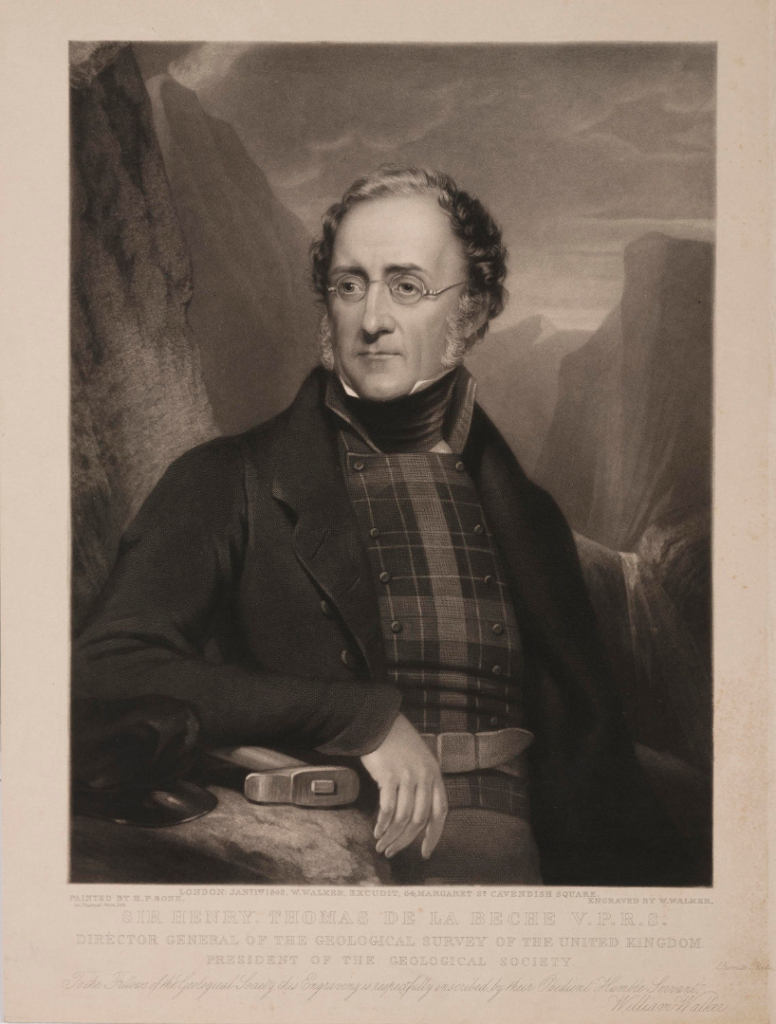
Playfair resumed his honorary professorship in Manchester, but soon the scientific and political world sought out his talents, through a mix of special commissions and permanent appointments. Although never given such a title, one might be taken by Robert Bud’s neat characterisation of his role as the national ‘consultant chemist’ of choice in fulfilment of Peel’s assurances and commitment (Bud and Roberts, 1984).
His first opportunity came in spring 1843 on being appointed, still aged only 25, to the Royal Commission inquiring into the health and sanitation of large towns. Its membership was highly prestigious, for its president was the Duke of Buccleuch, with other members including Sir Henry de la Beche, Robert Stephenson and William Cubitt (Reid, 1899, p 64). Playfair was congratulated on his appointment by Sir James Graham, then Home Secretary (Reid, 1899, p 87; PCP, 1842).
Being based in Manchester allowed Playfair to concentrate his research initially on Lancastrian towns. It was an arduous undertaking as he researched an ambitious cross section of towns to achieve a representative picture of health in an industrialising county (Report of the Commissioners for Inquiry into the State of Large Towns and Populous Districts, 1844).[16] The norm was for the report to have a single investigator, but he was also called upon to jointly author, with De la Beche, the report on Bristol (De la Beche and Playfair, 1845). Their report confronted mortality levels inferior only to Liverpool and Manchester, and this alliance of geologist and chemist produced a remarkable survey that embraces geography, climate, flooding, sewerage, scavengering (searching for usable discarded waste), population distribution and early in-roads into epidemiology. The report is replete with vivid prose:
In Clifton, though chiefly composed of handsome houses, inhabited by persons of affluent and easy circumstances, the want of sanitation is deplorable. Ranges of handsome houses, otherwise well appointed, have nothing but a system of cesspools (De la Beche and Playfair, 1845).
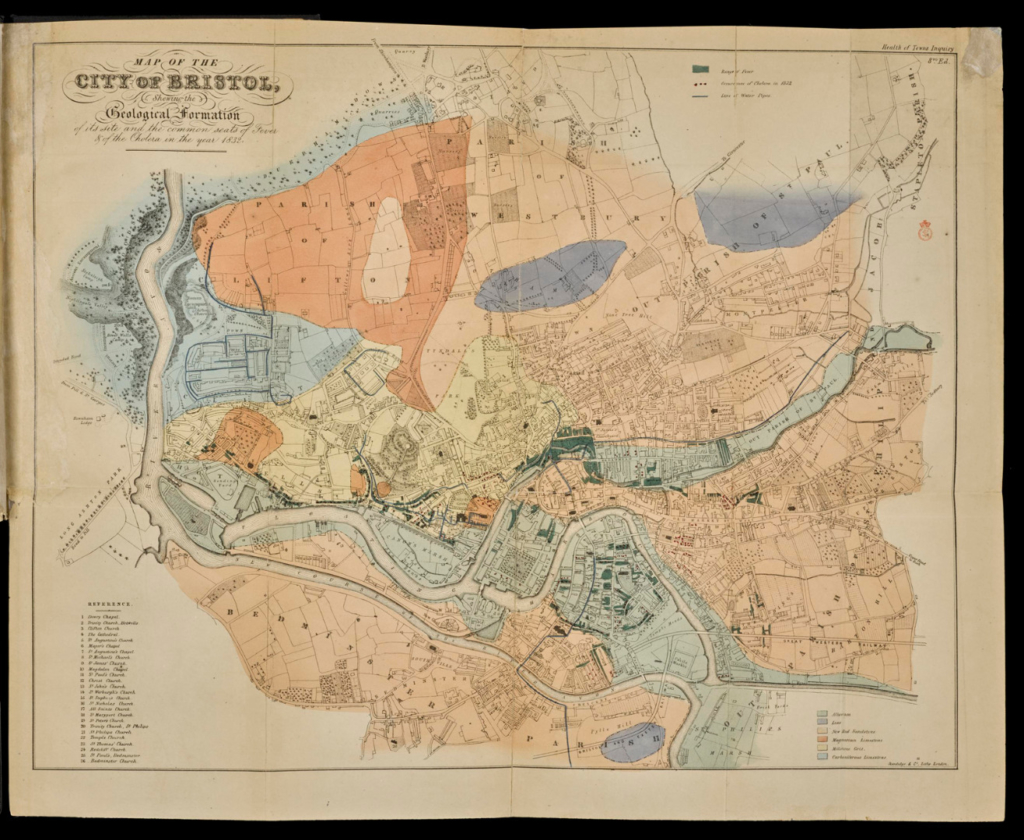
With Playfair gaining respect and recognition, he seemed to be needed everywhere. When the British Association for the Advancement of Science voted to support a major research project into the efficiency of the chemical operation of blast furnaces for iron, they invited Professor Robert Bunsen, the other greater Continental chemist ranking with Liebig, to undertake this in conjunction with Playfair. It was a major project, and Playfair and Bunsen collaborated closely through site inspections and correspondence, and Playfair’s facility with German was also much valued by the professor (PCP, 1842).[17] The report was completed in 1845, with the startling conclusion that in iron furnaces worked with coal, more than 80 per cent of valuable fuel escaped as gases and was thus wasted.
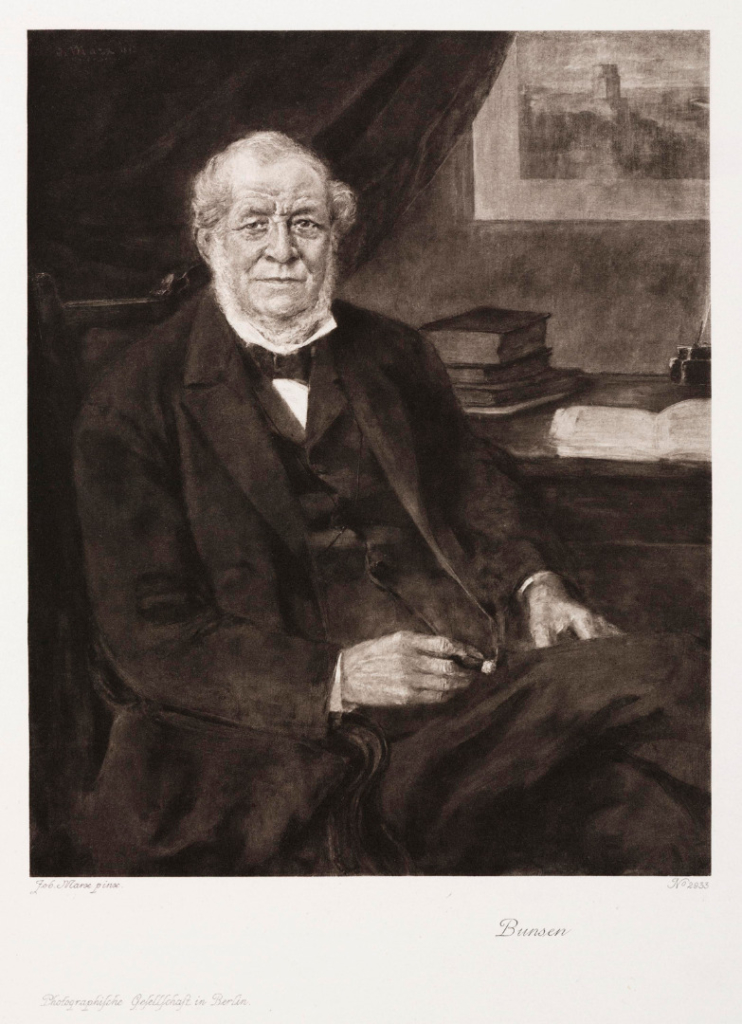
Given his close connections to the science and practicalities of geology, it was hardly surprising that mining inquiries should feature in Playfair’s portfolio. After a major explosion at a mine at Jarrow in 1845, in which 40 men died, Playfair and De la Beche were commissioned to investigate the composition of firedamp (methane). De la Beche was unable to visit the mines and so Playfair visited alone. It required some courage, and indeed the mine shaft was still hissing as he was about to embark on a descent. On his return to the surface ‘we found three miners in working dress who told us that they did not expect us to come up alive’ (Reid, 1899, pp 96–97). Furthermore, in an echo of his vivid experience during the Lancashire mill riots, he was also asked to intercede in a looming strike of colliers in the Newcastle area and his arbitration settled the dispute.

The calls on Playfair’s time covered a wide spectrum, ranging from the absurd to tragic. One task was to undertake a review of the condition of Buckingham Palace. The monarchical home was in a very poor state, with a great sewer running through the courtyard and highly toxic charcoal fires creating fumes directly below the royal nurseries. Whilst the faults were rectified, the government never dared publish the full report for fear of the outcry (Reid, 1899, p 94).
Though the condition of the palace was serious, this task pales in comparison with the Irish Potato famine at its outbreak in 1845. Playfair was summoned to Drayton Manor to give his gloomy prognosis to the Prime Minister, with the chemist being clear (both before and after a visit to Ireland) that he could not offer a remedy for the disease, and only an estimate of its magnitude. Playfair argues plausibly that the brutal realities were well understood and fortified Peel in his (at the time unsuccessful) attempt to get the cabinet to amend the Corn Laws (Reid, 1899, pp 98–199).
Despite such hectic activity across a range of political and social issues, Playfair was steadily building a structure to his scientific career too, the first step of which was his appointment, by Peel, to the position of Chemist to the Geological Survey in 1845. The survey had been founded by De la Beche in 1835, who had then gone on to create the Museum of Practical Geology in 1837 and its library in 1843. This appointment had its origins in earlier manoeuvring by Buckland and De la Beche at the time of the Playfair dinner at Draycott Manor in 1842. As Reid points out, whilst no formal record of the encounter was made, an extraordinary memorandum, in Peel’s own hand, does survive in which he notes their hope that Richard Phillips at the Museum of Practical Geology might be induced to depart from his post on a voluntary basis, thus creating employment for Playfair (Reid, 1899, p 81; PCP, 1842). However, Phillips did not take the hint and remained in post for two more years and it was only his retirement that made way for Playfair. Both the Survey and Museum were in Craig’s Court, Charing Cross, with a laboratory at Playfair’s disposal in Duke Street, Westminster.
London and the chemistry world
https://dx.doi.org/10.15180/211504/008By now Playfair was living in the capital and sharing rooms with his friend Andrew Ramsay, near the Consumption Hospital in Fulham.
It was an exceptionally promising period for chemistry, especially with the foundation of the Royal College of Chemistry in 1845, which offered the first proper system of chemical instruction and investigation. Chemistry was suddenly a fashionable subject, thanks in part to Liebig’s tour of 1842 and its high estimation amongst major landowners. Encouragement was forthcoming from Prince Albert and Sir James Clark, the Queen’s physician and by then a good friend of Playfair. The Royal College opened in modest premises in Hanover Square and ‘soon enjoyed a reputation quite out of proportion to its size’ (Cardwell, 1972). It was also a victory for the Giessen circle because August Hofmann, who had studied under Liebig at the same time as Playfair, was appointed as its first director.
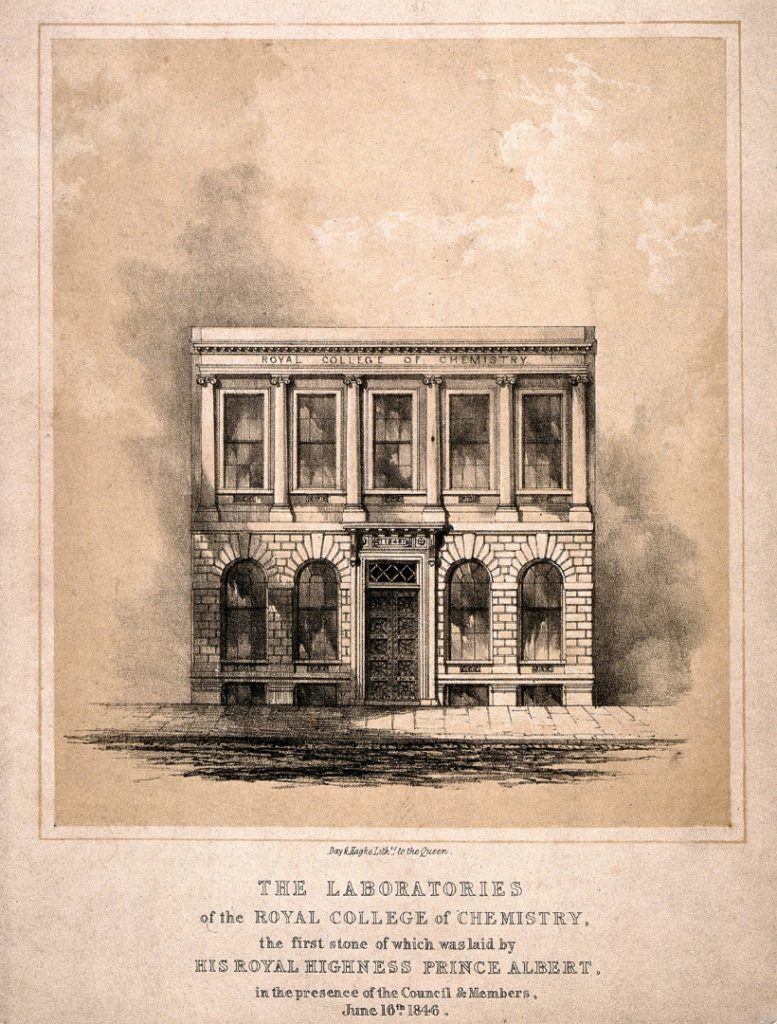
In the same reforming year, the Geological Survey and Museum of Practical Geology moved into new premises in Jermyn Street. It has been suggested that such a move was partly a response to the urgent reforms recommended in recent mining reports by Faraday and Playfair, as well as recognition of the need for more scientific methods in the industry (Cardwell, 1972). The full logic of the new site was realised in 1851 when both parts were unified under the banner of the Royal School of Mines. De la Beche remained as Principal, with Playfair lecturing on applied chemistry and Ramsay on geology. Indeed, the first two sessions (1851 and 1852) were notable for the exceptional quality of Playfair’s lectures and the distinguished audience.
Playfair’s calming diplomacy was now in regular demand, and in 1848 (the year he became a Fellow of the Royal Society) he was asked to prepare a first draft of the Chemical Society’s charter. This offered the opportunity of reconciling two diverging camps, between those who argued that ‘applied science’ was the application in industry of the theories of pure chemistry, and an alternative view (certainly held by Playfair) that applied science itself could be an academic subject (Bud, 1980). Debate about the purpose of chemistry was crucial in the nineteenth century as chemistry was largely synonymous with science itself, and it was felt to encompass the study of ‘pure’ and ‘applied’ science and continually expected to mediate between them (Bud, 1980). At this point Playfair was a respected chemist and ‘useful man’, and yet the scale of his contribution to national life was soon to move to a higher gear.
‘Into the full blaze of light’
https://dx.doi.org/10.15180/211504/009Reid described the next chapter in Playfair’s career as one in which he now came ‘into the full blaze of light that beats upon men who are engaged in national affairs of the widest interest’ (Reid, 1899, p 111). By 1850, Playfair had earned a considerable reputation, not least with Robert Peel. Reid suggests that Playfair was valued as a man of tact, insight and industriousness and ‘a wonderful power of surmounting difficulties that would have proved formidable to most men’, although his name was known primarily in scientific circles alone (Reid, 1899, pp 109–110).
In 1850 Playfair was much engaged in his considerable commitments to lecturing and government commissions and only kept an outsider’s eye on the preparations for the Great Exhibition. He played no part in its inception or the original preparations, and yet was about to be recruited to the cause. The project was to be delivered by a Royal Commission – comprising the most eminent men of commerce, industry and politics – and with an Executive Committee comprising Henry Cole, Sir Wentworth Dilke, Francis Fuller and Scott Russell. By 1850, the enterprise was in some difficulty because ‘the industrial classes hung back’ and did not give the Exhibition that support which was absolutely necessary for its success. It was in this context that Playfair was approached by the Prime Minister, with the novel proposal of becoming a ‘Special Commissioner’. Playfair was to become a member of the Executive Committee and was also in attendance at the meetings of the Commission, thus ensuring that both bodies were en rapport (Reid, 1899, pp 112–113).

Playfair was not easily persuaded to accept. The personal jealousies between the two committees were well known, and even a cursory glance might suggest a number of tensions: aristocrats versus merchants; town against country; military against civilian; and North versus South. Moreover, taking this role would remove him from his scientific work and De la Beche further objected to a weakening of the Royal School of Mines (Norrish, 1951). Whilst Playfair demurred, there ensued some political arm twisting. Robert Peel, in Opposition, but a keen supporter of the Exhibition, reminded Playfair of his claim upon his services, and then took him for an audience with Prince Albert; and after this Playfair duly accepted his new role (Reid, 1899, p 113).
It is hardly surprising that the members of the Executive Committee took umbrage at the criticism implied by this appointment and the idea that one of their number should rank in superior confidence with the Commission; indeed, it sent Cole into a fury. Playfair recounts that he encountered Cole marching down Whitehall on his way to the Home Office to offer his resignation and that it was only after some flattery and thoughtful discussions that he dissuaded him. In this account, whilst Cole’s nose was certainly out of joint, he was by then already in great despair at the indifference of the manufacturers with a decided risk that the ‘ship was sinking, and that the Exhibition would be a total failure’ (Reid, 1899, p 115). Playfair suggests that he offered Cole an assurance that he would remain ‘the mainspring of the Exhibition from first to last’ and that Playfair would confine his work to the problematic manufacturing centres.
However, it could be argued that the recruitment of Playfair reflected very real problems of which Cole himself was the source. In his commanding history of the Great Exhibition, Jeffrey Auerbach argues that ‘the fact is that Cole irritated those he worked with’ and was falling out with key figures in the organisation. By early 1850, Cole was far from indispensable to the project and Auerbach suggests that from spring 1850 onwards it was Charles Wentworth Dilke and Playfair who are largely responsible for the organisational success that it was (Auerbach, 1999).
In his new role Playfair set about unravelling a Gordian knot that had become the major impediment to the project. The Exhibition was burdened with a logical but impractical classification system that appeared to be ‘the chief cause of the want of sympathy between the promoters and the manufacturers’:
1. The Raw Materials of Industry
2. The Manufactures made from them
3. The Art employed to adorn them
As Playfair records diplomatically ‘the philosophical mind of the Prince Consort held tenaciously to this classification’, but it was clearly bemusing because all classes of objects to be displayed ran into each other in every manufacture. Thus, iron ore was a raw material for cast iron, and that in turn was a raw material for industries in iron (Reid, 1899, pp 115–116).
Playfair devised a wholly different scheme, which divided the manufacturers into 29 classes, which were then subdivided into subsections representing the distinct industries. After laborious consultation, and one imagines some careful handling of the Prince, it was duly and warmly adopted. The full catalogue does indeed show the compelling logic of the system. And it is interesting to see Playfair’s mental world at play because the running order, whilst not intended to suggest rank or priority, nevertheless opens with Mining and Mineral Products and is followed with Chemical and Pharmaceutical Products (Great Exhibition of the Works of Industry of all Nations: Official Descriptive and Illustrated Catalogue, 1851).
This was an important achievement and yet in spring 1850 – only a year before the royal opening in May 1851 – the Exhibition was far from securing enthusiasm, subscriptions and displays from large parts of its own country. As Auerbach comments, promoting the venture would take more than a centralised narrative because ‘promoting the exhibition required more than simply giving speeches, putting up posters or utilising the press’ (Auerbach, 1999). Central to any hope of success would be persuading and charming a complex network of provincial committees. From 1849 onwards, these had been created by the Royal Society of Arts and a daunting 297 were in place by the time Playfair came on board (Auerbach, 1999).
In theory, a crucial connection between the local committees and the Executive Committee were the ‘local commissioners’ appointed by the Executive Committee but resented locally as ‘outsiders’ in proud places like Manchester, where the issue was the subject of tart editorials in the Manchester Guardian (Auerbach, 1999). By contrast, the locally appointed secretaries to each committee could be highly effective once recruited as allies. Clearly, there was a most pressing need for the Executive Committee to send emissaries on a national charm offensive.
Whilst Playfair exceeded all expectations in this endeavour, it should be remembered that he was joined in the task by a second Special Commissioner. Playfair’s Memoirs inadvertently give the impression that Playfair alone enjoyed such an appointment and indeed his counterpart is entirely missing from the relevant extract in his chapter on the Great Exhibition (Reid, 1899, p 112). It is a surprising omission because Playfair was normally unfailingly courteous in acknowledging the contributions of others, and the Commissioner involved was a man of such interest that his inclusion would seem natural. The second Special Commission was Lieutenant-Colonel John Augustus Lloyd. He had served as captain of the engineers for Simón Bolívar (liberator of Colombia) and on his return became a Fellow of the Royal Society and a scientist for the Admiralty. To those who had assembled this dream duo, including Robert Peel, they seemed an ideal partnership given their great breath of knowledge, experience and connections at home and abroad (Auerbach, 1999, p 71).
Playfair and Lloyd divided the country between them, heading North and South respectively, and in due course turned the tide of indifference and opposition (Auerbach, 1999, pp 72–73). They were building upon the earlier 1849 national tour by Cole, Fuller and Wyatt to canvas subscriptions, the success of which had been hampered by ambiguity about the Prince’s role and the content priorities of the project (Bonython and Burton, 2003, p 118).
The archives of the Royal Commission for the Exhibition of 1851 are full of letters and reports evidencing the effectiveness of Playfair’s diligence. He was justly proud of his endeavours in Sheffield where one visit, comprising five 18-hour days, bore instant fruit. Here his pitch was to appeal to local pride and the opportunity to confirm that Sheffield cutlery was still of the finest calibre; and the number of exhibits duly rose from 150 to 296, and the amount of exhibition space rose from 5,000 to 13,700 square feet. Playfair wrote to Lord Granville proclaiming that ‘from a failure, Sheffield has become a complete success’ (Auerbach, 1999, p 73).
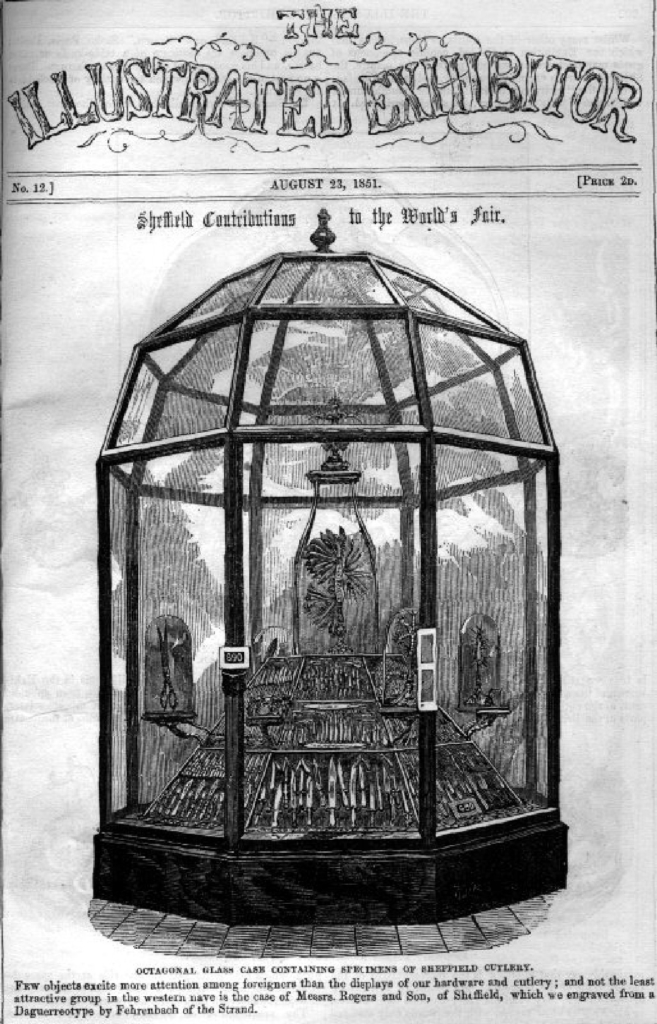
In all his forays, Playfair was most adept at symbolism and flattery. One persuasive technique was the circulation of little red leather books, in which promoters and subscribers could sign their names. The books appealed to civic pride and vanity, not least because the cover, which contained the royal seal, was embossed in gold. Whilst the innovation was not his, Playfair knew how to deploy it with great effect (Auerbach, 1999, pp 73–74).
He certainly needed a bag of tricks, for the northern towns viewed the project with very different degrees of enthusiasm. There was great suspicion of the Exhibition in Liverpool, for example, where objections included: that it was a cynical front for the Free Trade movement; that it was government propaganda; and that it would scarcely further the profile of a non-manufacturing town, unlike its great rival Manchester (Auerbach, 1999, pp 79–80). Playfair’s strategy was to secure the backing of the Liverpool Mercury and its owner Mrs Egerton Smith. The persuasion worked because the paper ‘virtually shamed the city into supporting the Exhibition’ and pointed out that the Exhibition would also celebrate merchants, retailers and traders as well as manufacturers. The plan worked perfectly, with the city sending a magnificent 44-foot long model of the Liverpool Docks (at a cost of £1,000) and a large display of imports (Catalogue of the Great Exhibition, 1851). Not unreasonably, Playfair believed that the city had been ‘thoroughly awakened’ by his efforts.
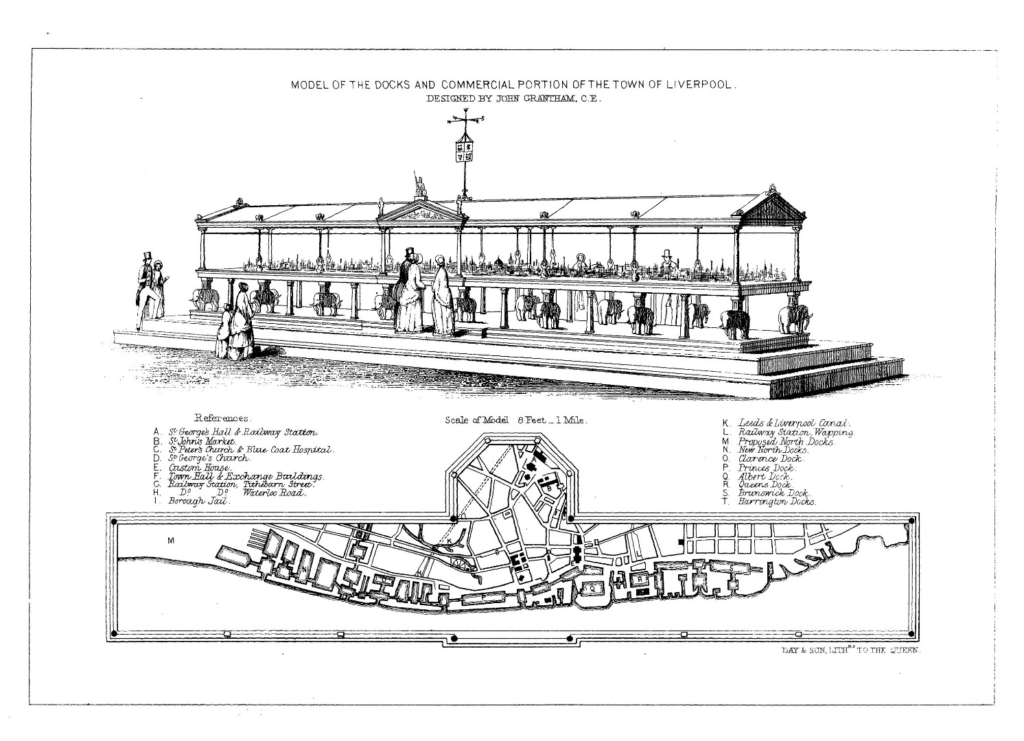
The Executive Committee lacked any clear plan or policy for the Celtic nations, but due to his native connections Playfair was able to do good work in Scotland, especially in Edinburgh and Glasgow. The former ranked in the top ten committees for amounts raised while Glasgow ranked fourth and had the highest subscription per subscriber (Auerbach, 1999, pp 84–85).
The Great Exhibition and recognition
https://dx.doi.org/10.15180/211504/010Playfair was intricately involved in the practicalities of display, as the Paxton building started to rise in Hyde Park. Indeed, the real work was probably a welcome distraction from the unending political battles, especially those in the press for, as he comments ruefully in his Memoirs, ‘even then the great croakers would not cease to frighten the public’. All forms of doom were predicted: a great influx of foreign visitors bringing epidemics such as cholera; immigrants using their visit as a pretext to sack the capital; and the destruction of domestic industry arising from a new craze for foreign goods (Reid, 1899, pp 118–121).
As exhibits arrived from across the country, Playfair and Lloyd ensured that the local committees were given considerable discretion over selecting exhibits and allocating space (Auerbach, 1999, p 92). Playfair also realised that it was hard to generate design for the raw materials sections and encouraged exhibitors to design illustrations for mining and extraction processes – rather than simply offer up a lump of coal (Auerbach, 1999, p 99).
His duties also extended to superintending the awards of the juries, although disputes between national juries were inevitable. He acquired the nickname ‘Stormy Petrel’ because his appearance denoted a simmering dispute where his ‘tact and judgement’ were needed to remove some difficulty (Reid, 1899, p 121). Playfair found himself also called upon as tour guide during the numerous visits by the Queen, Prince and royal children, which the Princess Victoria (later German Empress) recalled as a ‘particularly bright child’. In October 1851, the Prince’s private secretary, Colonel Grey, wrote to Playfair enclosing portraits of the royal children sent in gratitude (PCP, 1851).[18] His intimacy with the royal circle is captured in one of the depictions of the Royal Family visiting the British Nave, for Playfair’s diminutive and bespectacled presence can be seen at the back and right of the party.
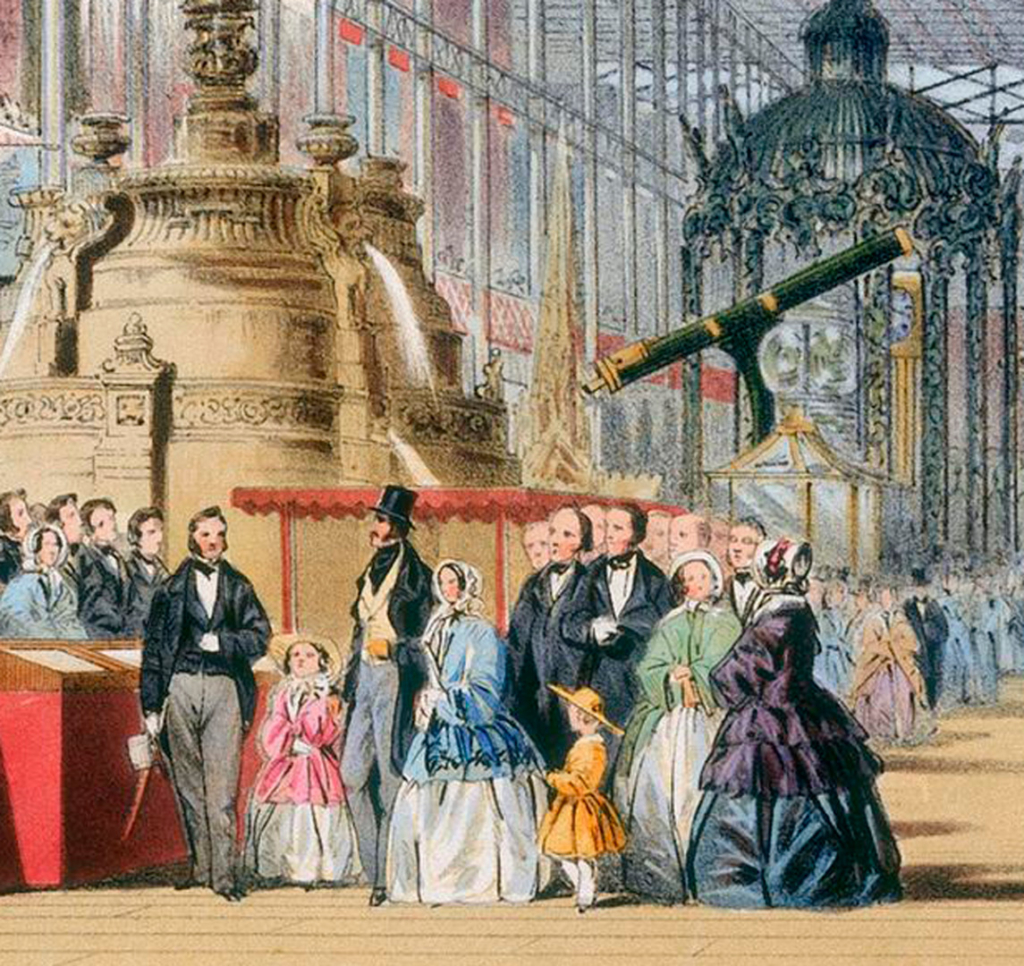
Whilst the portraits were a charming gesture, more significant was a letter from the Prince himself, asking Playfair to become a Gentleman Usher. The current incumbent, Colonel Reid, was to become Governor of Malta, and the Prince hoped that accepting this office would be seen ‘as an expression of my sense of the ability and zeal with which you have performed very important and difficult duties’. Playfair accepted this honour but declined a knighthood offered by the government, preferring to accept the Companionship of the Bath (CB) instead (Reid, 1899, pp 123–124).
Playfair might well have known that his rise was resisted by some in the established order. Sir Charles Phipps, a Yorkshire aristocrat and equerry to the Prince, protested that whilst Playfair was a learned chemist and respected public lecturer, none of these achievements could compensate for his lack of aristocratic lineage. In a letter of unstinting snobbery, he argued that Playfair should not become a Gentleman Usher because Playfair would lower the tone of the Court for he was ‘a man of low birth, ordinary appearance and uncouth manner’.[19] Fortunately, Prince Albert stuck to his judgement of Playfair’s merits, but the incident reminds us that the chemist could be seen as an irksome and disruptive figure in his early career.
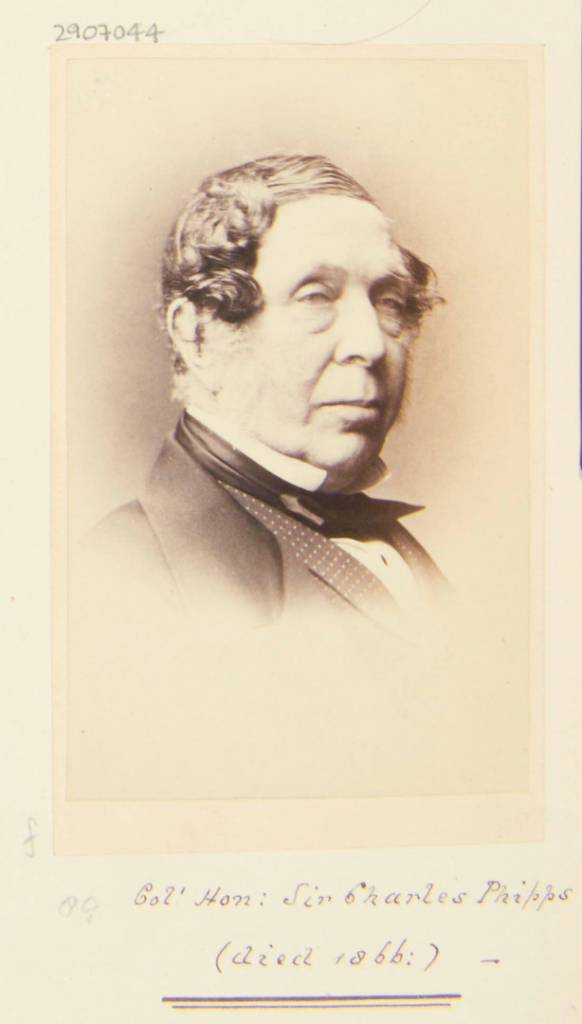
Playfair was enjoying a sophisticated status that marked acceptance within the circles of the best society. He was a regular dinner guest of Lord Granville, at Carlton House Terrace, with other members of the cabinet. And he also dined with the art collector and philanthropist Lady Ashburton, with fellow guests such as Thackeray, Carlyle, Tennyson and Dickens (Reid, 1899, pp 157–158). He was on great terms with the last, exchanging amusing correspondence about the perils of a public profile, and indeed Dickens was to take a keen interest in some of the educational reforms central to the next chapter of Playfair’s life (PCP, 1854).[20]
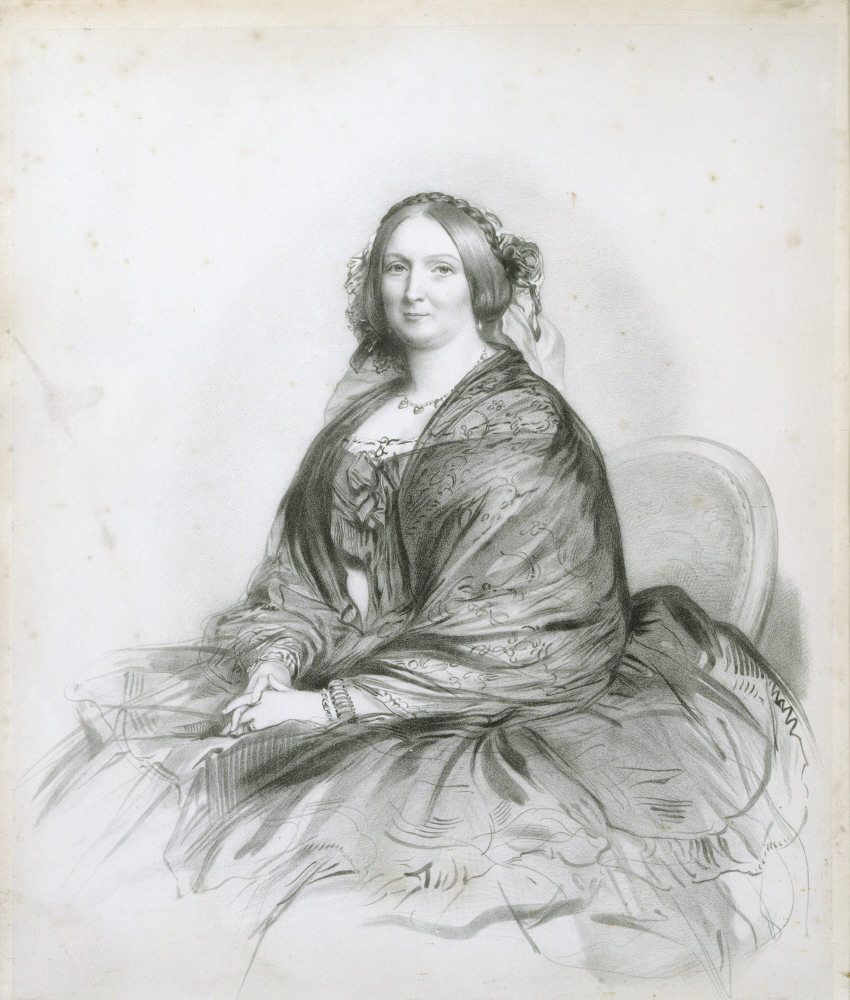
The struggle for reform
https://dx.doi.org/10.15180/211504/011The Great Exhibition ran from May until October 1851. Its huge popularity was evident from the start, and the projected financial success encouraged its commissioners to turn their minds at once to its legacy. In this optimistic mood, Playfair seemed destined to be a major player in educational reform, given his vital role in the success of the Exhibition, close affinity and access to Prince Albert, and what Sir Thomas Wemyss Reid described as his ‘superabundant energy’ (Reid, 1899, p 111). However, the years 1851–8 showed that there was far less consensus around the prospectus for change and these years were fraught with frustrations for Playfair. There were certainly some successes, but he also met resistance born of vested interests or straightforward apathy, and his own tendency towards distraction through numerous initiatives.
The crucial starting point is a memorandum penned by Prince Albert in August 1851 in which he outlined his concept for the creation of an institution embracing the major sections of the Exhibition (raw materials, machinery, manufacturing and the plastic arts), which would devote itself to the industrial pursuits of all nations. He outlined his own understanding of human knowledge progress and thus:
If I examine what are the means by which improvement and progress can be obtained in any branches of human knowledge, I find them to consist of four:
First: Personal study from books
Second: Oral communication of knowledge by those who possess it to those who wish to acquire it
Third: Acquisition of knowledge by ocular observation, comparison and demonstration
Fourth: Exchange of ideas by personal discussion (Reid, 1899, p 131)[21]
Beyond this abstruse introduction, so typical of the Prince’s heavy style, the document proceeds to describe the practical need for a library, lecture rooms, exhibitions and seminar rooms. As in the vexed issue of how the exhibits were to be classified in the Exhibition, the Prince could be both theoretical and fixed in his notions. Indeed, Benjamin Disraeli was to remark that Albert was rather over-educated and ‘something of a pedant and theorist’ (Bryant, 2011).
Whilst Albert is the nominal author of this framework, one can trace the influence of others throughout. There are Playfair echoes, especially in the urging that a great nation must move beyond its natural advantages in raw materials, deploying skill and intelligence too. By now Playfair was spending many hours with the Prince, especially at Windsor and Osborne House, helping him shape his ideas. However, the memorandum was almost certainly all-embracing in its ambition, and its internationalism was bound to be irksome to the domestic reader and so ‘long and weary months were spent in discussing the manner in which the Prince’s good intentions could be carried into practical effect’ (Reid, 1899, p 134).
Later in the same month, Playfair wrote to De la Beche, telling him that the Prince had been persuaded to postpone publication of the scheme as it was ‘not sufficiently mature for public adoption’. However, Playfair then outlines crisply his own plan that would include expanding the pre-existing schools of design to include other branches of knowledge. These would be united with a University of Mines and Manufacturers in London, empowered to grant degrees and diplomas. The existing Museum of Practical Geology would embrace metallic manufactures, and the whole enterprise would be ‘one great central college’ with a further counterpart created for the textile industry. Playfair concludes that:
The ideas are still practically crude, and must be much modified to take with the public; though as they are certainly founded on truth, they will certainly be the ultimate ones adopted (Reid, 1899, p 135).[22]
However, Playfair’s cocksure confidence was to encounter dissent and often outright defeat. The veteran De la Beche was instantly hostile to the proposal and firmly resisted any attempt to ‘generalise’ his institution (Bud, 1980). Playfair had no greater luck when he attempted to revive his proposal in 1855, shortly after the death of De la Beche. The aristocratic geologist Roderick Murchison became the new Director and declared that the institution must remain solely focused on geology and mining because ‘the affiliated sciences are all subordinate to that fundamental point’ (Bud, 1980, pp 90–91).
Playfair also encountered intransigence when promoting the easy logic of expanding the remit of the existing design schools. This network was already firmly in place and to Playfair it seemed obvious that these might be a sure foundation for a unified curriculum, in comparison to the risky birth of a parallel set of scientific colleges. In 1835, a government-approved select committee had examined design education and its 1836 report had led to the formation of the Government Schools of Design. Founded in 1837, the central school in London supported regional schools and William Dyce had been appointed Superintendent of them in 1838 (Bryant, 2011).
The attempt to colonise the design schools provoked some bickering between Playfair and Cole. At first, Playfair seemed to hold all the cards because in January 1852 he called on Cole with Edward Cardwell, the new President of the Board of Trade. They had been to see Prince Albert the previous day (Playfair assuring Cole, implausibly, that his omission from the meeting was unintentional) and had now come to tell Cole that a new department was mooted that would embrace science as well as art (Bonython and Burton, 2003, p 158). Playfair maintained the pressure and in February he took Cole along to Buckingham Palace where the Prince outlined his support for more industrial education, which would mean an evolution of the existing Department of Practical Art (a Cole creation). Sure enough, the Prince used his influence, probably at Playfair’s behest, to ensure that the Department was transferred into the creation of March 1853: the Department of Science and Art. Cole was to be Secretary for Art and Playfair the equivalent for Science (Burton, 1999, p 43).
Cole did not record his feelings about being presented with such a fait accompli, but one might surmise. And the annoyance was one of taste, as much as dignity, for neither Cole nor his great ally Richard Redgrave were keen on science infiltrating their empire because ‘Science was at present incubus to art’ (Bonython and Burton, 2003, p 158). Indeed, Cole continued to pitch this viewpoint by objecting, with no success, to the decision to place Science before Art in the department title, arguing that Art should take precedence because it was more popular (Butterworth, 1968).
Playfair continued to badger his opposite number, but to no avail. Typical of his nettled tone was a letter to Cole in 1853:
Your colours as well as your glazes are chemical appliances requiring as much practical skill as knowledge, that men of abstract science are insufficient to improve them greatly, but practical men acquainted with Science would exercise a more beneficial influence on them. Why should you not have a School of Industrial Knowledge instead of Art Only (Bud, 1980, p 90).[23]
To compound Playfair’s ministry squabbles, he also risked the wrath of suspicious religious leaders. The frontispiece of the catalogue for the Great Exhibition declares that ‘The Earth is the Lord’s and all that therein Is’ and this encapsulates the religiosity of mid-nineteenth century Britain. The Church of England and the Non-Conformists were already at odds with the government, and with each other, over the teaching of basic literacy; they were certain to be even more troubled at the prospect of being undermined by the rise of scientific education (Burton, 1999, p 43). Indeed, Playfair was rebuked in two letters from Colonel Grey, private secretary to the Prince, both for premature inclusion of proposals for new scholarships in planning for the legacy and for alarming the religious world with his eager ideas. Grey apprehended a cry of ‘godless instruction’ being provoked by ‘any avowed educational scheme’ because the vexata questio will be: by whom should the new education scheme be conducted; and he concludes with the vivid warning that ‘once get into that troubled sea, and you are swallowed up in the vortex of contending parties’ (Reid, 1899, pp 137–139).[24]
The strains of reforming battles are evident in a speech Playfair gave on prize-giving day in 1853 at Sheffield People’s College (a mechanics institute) (Playfair, 1853). He urged the college to play its part in addressing the parlous lack of science fellowships in colleges and universities. And he proceeded to offer a detailed prescription for the development of their curriculum, suggesting that the college be divided into lower and upper divisions, with the students moving into the latter to focus on maths, mechanics, physics, chemistry and technical drawing. Unfortunately, whilst classes on chemistry were added the following year, a major reorientation of teaching never happened (Bud, 1980, p 91). Indeed, some have observed that exhortations of this kind indicate alarm from those who would get things done, but its efficacy in achieving those ends is less apparent (Cardwell, 1972, p 82).
This speech shows two markedly different sides to Playfair: passionate rationalist, and stylish orator. Playfair fights his current foes and religious objections to scientific teaching by asserting ‘I have neither sympathy with their fears, nor inclination to argue the point with them’. And as persuader, his flair is much in evidence with a witty entreaty to shake off inertia because:
It is surely wise to consider if we are advancing with the progress of events for it we do not, depend upon it that we shall, like Rip Van Winkle, awake one morning to find that we are a generation behind (Playfair, 1853, p 12; p 4).
Playfair was speaking in October and in the same month Britain was to join France in fighting Russian territorial ambitions in the Crimean War. The war lasted until 1856 and must have distracted the body politic from educational reform at home. Playfair remarks that it ‘heavily taxed the nation’ and so it is surprising that its restraints on national appetite and resources for educational reform is entirely absent from the accounts of Bud, Burton and Cardwell.
In his own account of this period Playfair also reveals his tendency to distraction and stubbornness, happy to use his influence with the Prince to bombard the Master of Ordnance with a wide range of ‘helpful’ suggestions. These included the proposal for a shell containing cyanide of cacodyl, which would be launched between the decks of enemy ships and poison the men if they remained at their guns. Playfair vents his grievance when this idea is rejected for being as dishonourable as poisoning the wells of the enemy (Reid, 1899, p 159).
Playfair’s biographer understood that these were puzzling years for Playfair because whilst his diplomatic skills had served him well in the discreet persuasion of powerful men, they were less reliable when dealing with a wider range of public opinion and so ‘it was not unnatural that he should under-estimate the difficulties of the task which lay before him in moving an inert public opinion in favour of a grand scheme of practical education’ (Reid, 1899, p 136).
And yet Playfair harboured a crisp and urgent vision, from which he was not to be easily deflected. He was in no doubt that technical education was in a very backward state and that arousing public attention was essential; and the task ahead was daunting for there were no colleges of science other than Owens College in Manchester and the Andersonian in Glasgow, as well as a few schools of navigation in the seaports. One might respect his honest assessment that:
I began a crusade in favour of technical education. It was weary and dreary work. My voice sounded to myself as the voice of one preaching in the wilderness (Reid, 1899, p 152).
A compelling example of Playfair’s advocacy, and a scientist’s hankering for evidence, was his determination to visit France, Holland, Belgium, Austria, Scandinavia, Prussia, Bavaria and the Grand Duchy of Baden to investigate their systems of technical education. Although it was entirely his own initiative and thanks to the impeccable international connections he had made at the Great Exhibition, the field trip had the air of a government mission with Playfair afforded all possible access and courtesy by manufacturers and governments alike (Reid, 1899, p 149).
His fieldwork was duly published as Industrial Instruction on The Continent, and it provided the basis for the opening lecture of the 1852–53 session of the Museum of Practical Geology; an event attended by leading figures in the political and wider establishment. Playfair had great faith in the polytechnic approach and his model institution is clearly the École Centrale des Arts et Manufactures, founded in Paris in 1829 by the industrialist Alphonse Lavallée. Here aspiring manufacturers were taught by eminent scientists (Bud, 1980, p 87). Playfair spent a great deal of time observing classes where students were taught mechanics, engineering, metallurgy, and chemistry; and design and drawing too. His report praises the international background of the students and their ready employment on graduation, and he clearly saw them as the ‘doctors’ of European factories, mills and agriculture (Industrial Instruction on the Continent, 1852).
According professional respect to these ‘new’ men would have meant much to Playfair because in his major lecture on the lessons to be learned from the Great Exhibition he had railed against the entrenched snobberies:
We are remarkably unchangeable. Three Professions, the Church, the Law and Medicine, were supposed some centuries since, to represent learning and, with a wonderful blindless, they are still accepted as all-sufficient (Playfair, 1851, p 204).
Better fortune in 1855
https://dx.doi.org/10.15180/211504/012Professional matters fared rather better for Playfair in 1855 because the year saw the fruition of two important projects in which he had invested time and prestige.
First, he had been greatly encouraged in early 1853 by receiving a delegation from a committed band of politicians and local dignitaries, led by local lawyer and political Arthur Rylance, seeking his assistance in the creation of a new technical institute for Birmingham. Playfair visited in May, and whilst he stressed that the department could not commit to general funding, it would consider a minimum salary guarantee for teachers until the proposed Institute could be self-financing, and he also offered a large discount on scientific apparatus (Waterhouse, 1954). Much encouraged, the committee organised a Town Hall meeting, which Cole attended on behalf of Playfair, and at which he stressed the need for the new body to be self-financing, not holding out a ‘begging bowl’ and making an exceptional effort to embrace the educational needs of working classes in a city with a poor record in elementary education (Waterhouse, 1954, p 16).
The climax of this first year was to be three nights of readings at the Town Hall by Charles Dickens, an idea the author had himself proposed because the education of working men was a cause dear to him, and the political decisions on the proposed site, which enabled the required Act of Parliament to pass in June 1854 (Waterhouse, 1954, p 18; p 20). Doubtless Playfair was also impressed by the dedication of the local Artisans Committee, which stressed how ordinary working men (‘Adult Operatives’ in their words) had missed out on so much education and needed training in elementary science. Playfair wrote to the committee praising their rigour for ‘everywhere systematic instruction in science and art is being pushed aside by an unconnected series of the most desultory lectures’ (Waterhouse, 1954, p 27).
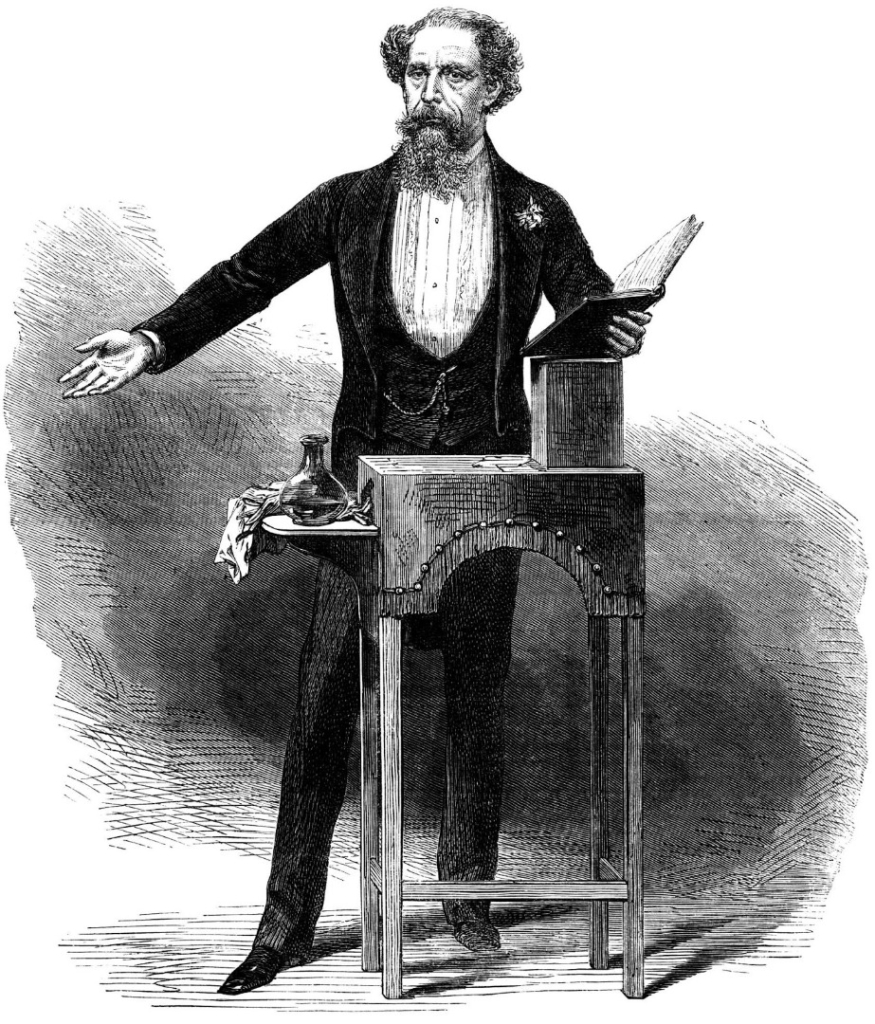
Birmingham had been a keen participant in the Great Exhibition and such pedigree, and the pioneering spirit of this new project, meant that it was honoured by an official visit from Prince Albert to lay the foundation stone for the new Birmingham and Midland Institute, in November 1855. Playfair was intimately involved in every aspect and endured some peremptory fussing from Colonel Grey about the ceremonies, on behalf of the Prince (Waterhouse, 1954, p 24; p 31).
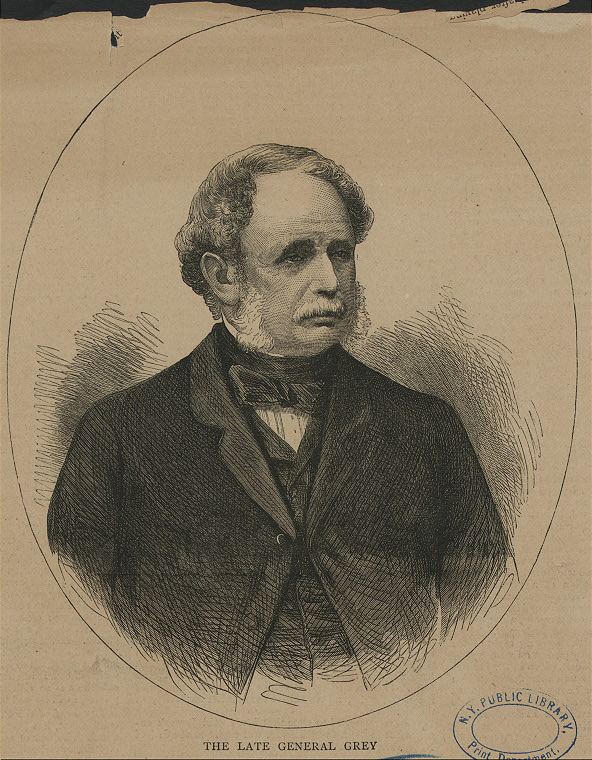
The Prince’s speeches that day were seen by many as a major statement about the future of the educational vision that he had shaped with Playfair. He most tactfully suggested, perhaps referencing the earlier concerns bubbling from the religious establishment, that it was a duty to study the laws by which God had structured the universe (Waterhouse, 1954, pp 31–32). The Prince also acknowledged the hope for the future because:
And most heartily do I join with you in congratulating the country that not even such as war as that in which we are now engaged, calculated as it is to enlist out warmest sympathies, and to engage our more immediate interest, can divert Englishmen from the noble work of fostering the arts of peace (author’s italics) (Waterhouse, 1954, p 31).
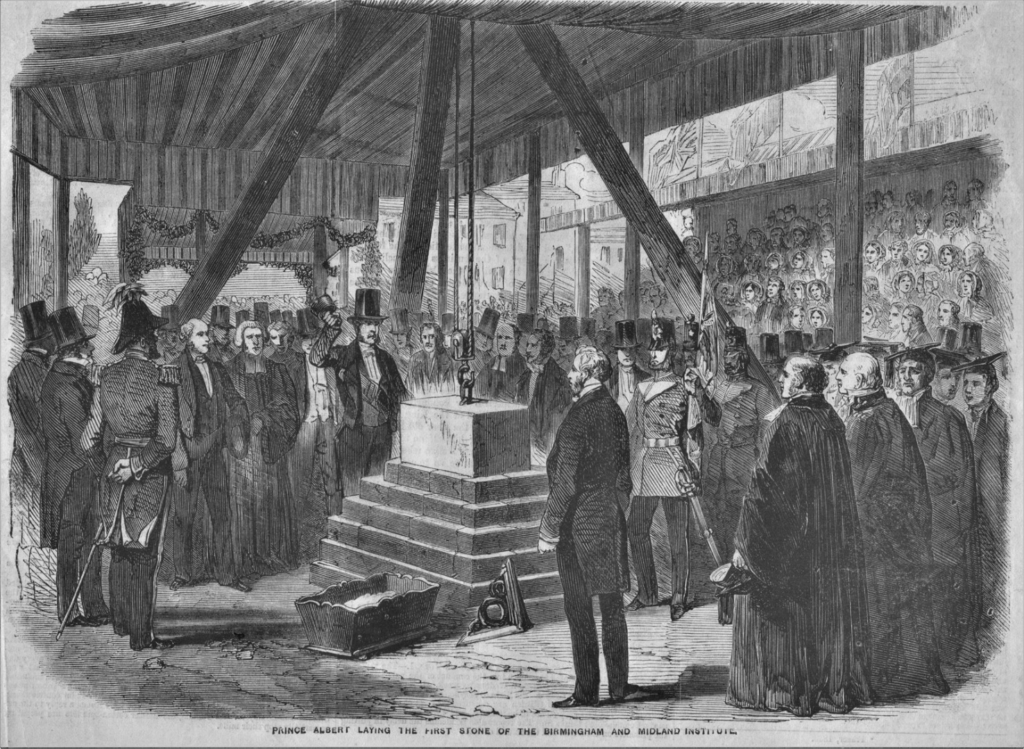
The Institute started to offer penny lectures for working class men and women from 1856, well before its splendid new building opened on Paradise Street. This would have gratified Playfair because one of his recurring complaints was that the successful spread of the design schools had been enabled by their access to wealthy patrons; and expensive daytime classes for their children could then be used to subsidise cheap evening classes (Bud, 1980, p 91).
A second pleasure for Playfair was the creation of the first national museum in Edinburgh. He was engaged in extensive negotiations with both the University and City Council, securing collections and free land for the project; and Parliament duly voted the requisite capital and revenue funding. George Wilson, chemist and writer, became its first Director in 1855 (Reid, 1899, p 151). Playfair describes Wilson as an old friend and fellow student for he had been an assistant to Thomas Graham at the same time as Playfair (Hartog, 2004). Playfair had enjoyed free reign to shape the Edinburgh museum whereas the emerging South Kensington Museum ‘was intended for art, not science’ and until then his only focus had been on the Museum of Practical Geology and the Museum of Industry in Dublin (Reid, 1899, p 151).
Playfair’s glancing comment that the South Kensington Museum was intended for ‘art not science’ is intriguing and raises questions for further reflection and museological research. At its foundation in 1857, the Museum was a complex mixture of themes, collections and objectives. However, the 1860 edition of its Guide regrouped its disparate holdings into an Art Division and a Science Division (Burton, 1999, p 54). One explanation could be that Playfair was to be away from London and focused on professorial life in Edinburgh just as the Museum entered its ‘heroic age’; and so in referring to the predominant Art narrative the Memoirs are speaking with hindsight.
Whilst Cole and Playfair are crucial figures in the history of the Great Exhibition legacy, one might also consider the brief and intense role of John Charles Robinson. He was curator (and later Art Referee) at the Museum over the decade from 1857; and his voracious collecting was to exercise a commanding influence in favour of the Art narrative. Indeed, as he boasted ‘the legitimate art gatherings of the Museum, directly under the writer’s care and purveyance, took the lead and visibly emerged from the motley, medley chaos’ (Burton, 1999, p 54; Davies, 2004). Robinson was to make a ‘thorough ransacking’ of the auction houses and private collections across Europe, to the point where the French government was to complain that the well-financed British Museum and South Kensington Museum were able to ‘carry off the prime pickings’ at the 1861 sale of the outstanding art collection of Prince Soltykoff (Burton, 1999, p 63; p 65).
It might be argued that even if Playfair had stayed at the Department his influence on this trend would be circumscribed by respect for Cole, and the sheer audacity of Robinson. Even Cole struggled to contain insubordination and an undue passion for antiquarianism over the modern, and so Robinson was eventually dismissed in 1867 (Burton, 1999, p 71). Robinson’s legacy was to be the foundation of the one of the world’s greatest Medieval collections, including such treasures as the Eltenberg Reliquary.
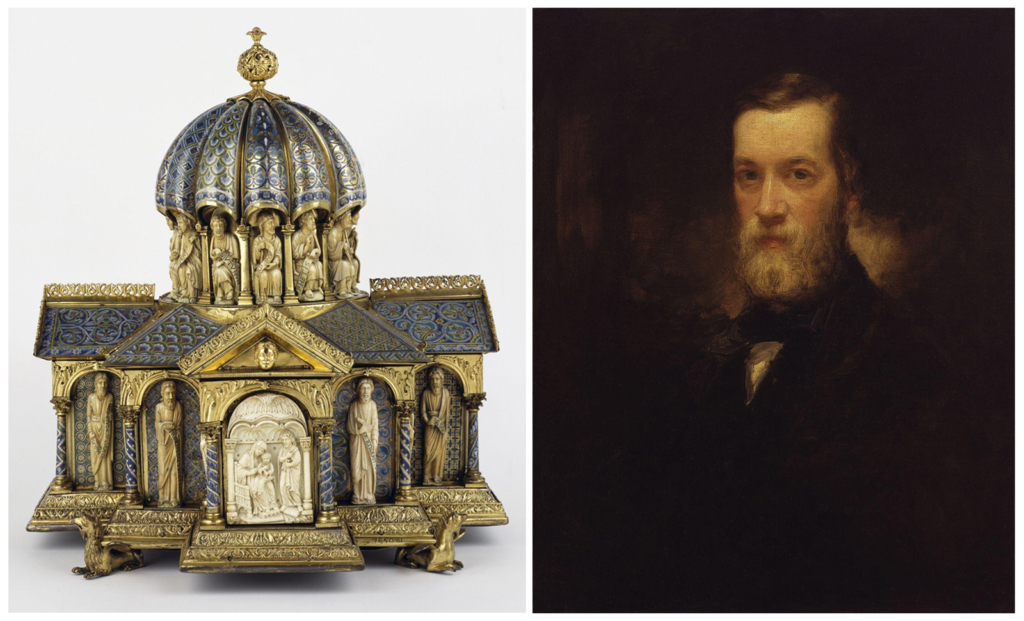
Heading North
https://dx.doi.org/10.15180/211504/013The busy activities of 1855 also offered administrative reform, and further honours for Playfair. The joint working of the competing Secretaries of Art and Science was replaced in a new department structure (no longer under the Board of Trade, and now transferred to the Education Department of the Privy Council) with Playfair as Secretary and Cole as Inspector-General (Burton, 1999, p 142). Playfair’s standing was further augmented by his appointment as a commissioner for the first great international exhibition in Paris (Burton, 1999, p 161). Within his scientific realm, it would also have been a pleasure to become President of the Chemical Society in 1857 (Moore and Philip, 1941).
However, whilst Playfair may have been making some headway professionally, his private life was in crisis and satisfaction with his public projects was waning. His first wife was in declining health and died that year. Within months of his new departmental appointment, he was considering applying for the Edinburgh Chair of Chemistry, had expressed an interest in the post of Secretary to the newly formed Board of Health, and had even applied to be Master of the Mint (Butterworth, 1968).
In this context, it is not surprising that some senior departmental officials became concerned at Playfair’s frequent absences and inattention to the minutiae of government business (Butterworth, 1968, p 36). Indeed, the picture that emerges of Playfair’s skills as an administrator, albeit one frustrated by the opponents of reform, is mixed. He could be an innovator seeking, for example, ways of incentivising the teaching of science, through proposals for a ‘payments by results’ approach to motivate the teachers and students (Butterworth, 1968, p 33). However, during this period and in later public life after 1858, some who worked with him suggested that Playfair was not quite the efficient organiser he imagined himself to be (Butterworth, 1968, p 38).
In 1858, Playfair applied again for, and accepted, the Chair of Chemistry at Edinburgh University, and left London and his position at the Education Department. He omits to record that the competition for the appointment was fierce and success was far from assured; although he was eventually able to write to Cole of his success in a contest that has ‘risen to bloodheat and nearly to blows’ (Correspondence of Henry Cole, 1858).[25]
Playfair offers few explanations for this bold move in his Memoirs, but there are clues in his marriage to Jean Ann Millington, a lady of some fortune, in 1857. This greater prosperity had allowed him to halve the time committed to his Inspectorate role and return to some scientific research. In such propitious circumstances, he was in the right frame of mind when the Edinburgh role became vacant (Correspondence of Henry Cole, 1858, p 164). His eagerness is also apparent in the £1,000 of his own money he spent on fitting out his new university laboratory (Bud, 1980, p 91).
Burton is rather dismissive of this move, although Playfair is for him always a minor player in the epic story of the Victoria and Albert Museum, and he suggests that ‘Playfair did not achieve much before departing’ (Burton, 1999, pp 43–44). It is certainly true that Playfair regarded the creation of the South Kensington Museum as a matter largely for Cole alone, but Burton’s tart assessment seems unbalanced. Indeed, in his survey of leading figures in the development of Britain’s science establishment, Crowther includes Playfair alongside the likes of Richard Haldane, Henry Tizard and Frederick Linderman (Crowther, 1865). For him, Playfair has been underrated and his core argument is that he was:
The first to succeed in securing for science and technology sustained consideration within the system of British government. The nature and magnitude of his achievement was not fully grasped by his contemporaries and have become more conspicuous only through the light of twentieth century experience (Crowther, 1865, p 105).
Crowther is conscious of the flaws in his case, including perceptions of Playfair as a cultish apostle of Liebig with a chemical knowledge insufficient to explain the Irish potato blight; and his ubiquity on every commission and report of the day (Crowther, 1865, p 106–108). And one might argue that the roots of some of his post-1851 institutions proved shallow: of all the new science schools created, only those in Aberdeen, Birmingham, Bristol and Wigan survived beyond 1860, hampered by poor teaching and weak finances (Cardwell, 1972, p 89).
A lively riposte to these reservations might be to cite Playfair’s truly crucial role in the success of the Great Exhibition, and all the educational and cultural legacies that were to flow from it. And besides, sometimes achievement cannot be easily assessed in the near term, because salient ideas take time to root and flourish. It could be said that by consistently advancing the value of pursuing abstract science, Playfair was making his most strategic and resonant contribution to the British research base.
In his lecture on the lessons of the Great Exhibition, Henry Cole argued for a literal approach to industrial production because ‘the value of science depends on its practical application and that, I submit, depends on what the public want of it’ (Cardwell, 1972, p 89). Playfair offered a witty aspirational alternative by suggesting that studying chemistry practicalities alone makes us little better than alchemists. Indeed, he goes on to argue that ‘as soon as chemistry began to be studied for the mere sake of abstract truth, then she deigned to reward man for his unselfishness, by numerous collateral results having a material benefit’ (Playfair, 1852).
Playfair’s passionate advocacy for science, both applied and abstract, and the need for a robust educational system empowering a native workforce, still resonates today. In 2017, the British government published its Industrial Strategy: building a Britain fit for the future.[26] In extolling the virtues of a creative economy, rich in design and technology, it harks back to the concerns of Prince Albert and Playfair, for in 1852 in his lecture ‘On the National Importance of Studying Abstract with a view to the Healthy Progress of Industry’, Lyon Playfair pronounced so vividly that:
As surely as darkness follows the setting of the sun, so surely will England recede as a manufacturing nation, unless her population become much more conversant with science (Playfair, 1852, p 29).
Bibliography
https://dx.doi.org/10.15180/211504/044The Great Exhibition
Great Exhibition of the Works of Industry of all Nations: official Descriptive and Illustrated Catalogue (London: William Clowes and Sons, 1851)
Dickinson’s Comprehensive Pictures of the Great Exhibition of 1851 (London: Dickinson, Brothers, 1851), two volumes
Archives and other
Playfair, H, 1999, The Playfair Family (family publication)
The Playfair Collection, University of St Andrews Library, Department of Special Collections
Royal Archives at Windsor – Quoted as RA, followed by the reference
List of the Papers and Correspondence of Lyon Playfair, Imperial College Archives (and compiled in June 1967) – Quoted as PCP, followed by the reference
Correspondence of Henry Cole, Victoria and Albert Museum
Population data for 1801 and 1841:
Journal of the Statistical Society of London, March 1854, Vol 17, No 1, p 46
Dictionary of National Biography (DNB):
Graeme J N Gooday Playfair, Lyon, first Baron Playfair (7 January 2016)
P J Hartog Wilson, George (23 September 2004)
G Le G Norgate Reid, Sir Thomas Wemyss (23 September 2004)
Helen Davies, ‘Robinson, Sir John Charles (1824–1913)’, Oxford Dictionary of National Biography, Oxford University Press, 2004
Playfair and his circle
Reid, Thomas Wemyss
Memoirs and Correspondence of Lyon Playfair (London: Cassell and Company, 1899)
Beche, Henry de la and Lyon Playfair
Report on the State of Bristol and Other Large Towns, Health of Towns Commission, 1845 (London: William Clowes and Sons, 1845)
Cole, Henry
‘On the International Results of the Exhibition of 1851’, in Lectures on the Results of the Great Exhibition, delivered before the Royal Society of Arts, Second Series (London: David Boque, 1853), pp 419–451 (1 December 1852)
Liebig, Justus
Chemistry and its Applications to Agriculture and Physiology (London: Taylor
and Walton, 4th Edition 1847), Trans. Lyon Playfair
Playfair, Lyon
‘Analysis of the Soil and Subsoil of a Very Productive Field near Sutton, in
Norfolk’, 7 July 1845 (Journal of the Royal Agricultural Society, Inventory
No. 156054, pp 577–578)
Playfair, Lyon
Industrial Production on the Continent: Museum of Practical Geology
Introductory Lecture for the session 1852–3 (London: Eyre and Spottiswood,
1852)
Playfair, Lyon
‘The chemical principles involved in the manufacturers of the Exhibition’, in
Lectures on the Results of Great Exhibition of 1851, delivered before the
Royal Society of Arts, First Series (London: David Boque), pp 159–208
(7 July, 1852)
Playfair, Lyon
‘On the National Importance of Studying Abstract Science with a view of the
Health Progress of Industry’, being an introductory lecture in the course of
chemistry session 1851–2 (London: Museum of Practical Geology; and Eyre
and Spottiswoode, 1851)
Playfair, Lyon
Industrial Instruction on The Continent (London: Museum of Practical
Geology, 1852; and Eyre and Spottiswoode, 1852)
Playfair, Lyon
An Address to the Students and Friends of the People’s College, Sheffield, 26
October 1853 (Sheffield: Robert leader, 1853)
Secondary sources
Armstrong, Colin
‘Introduction’ to Limited Edition of Memoirs and Correspondence of Lyon Playfair (P M Pollak, Science Reprints, Jemimaville, Scotland, 1976)
Auerbach, Jeffrey
The Great Exhibition of 1851: A Nation on Display (New Haven and
London: Yale University Press, 1999)
Bonython, Elizabeth and Antony Burton
The Great Exhibitor: The Life and Work of Henry Cole (London: V&A Publications, 2003)
Brock, William H
Justus von Liebig: The Chemical Gatekeeper (Cambridge University Press,
1997)
Bryant, Julius (ed)
Art and Design for All: The Victoria and Albert Museum (London: V&A
Publications, 2011)
Bryant, Julius
Designing the V&A: The Museum as a Work of Art (1857–1909) (London:
Lund Humphries, 2017)
Bud, R F
The Discipline of Chemistry: The origins and early years of the Chemical
Society of London (University of Pennsylvania, PhD, 1980)
Bud, R F and G K Roberts
Science Versus Practice: Chemistry in Victorian Britain (Manchester:
Manchester University Press, 1984)
Burton, Anthony
Vision and Accident: The Story of the V&A (London: V&A Publications,
1999)
Butterworth, Harry
The Science and Art Department, 1853–1900 (PhD Thesis, University of
Sheffield, 1968)
Campbell, John
Haldane: The Forgotten Statesman Who Shaped Modern Britain
(London: Hurst and Company, 2020)
Cardwell, D S L
The Organisation of Science in England (London: Heineman, Revised
Edition 1972)
Crowther, J G
Statesmen of Science (London: The Cresset Press, 1965)
Dilke, Sir Charles Wentworth
Problems of Greater Britain (London: Macmillan and Co, 1890)
Frayling, Sir Christopher
‘We Must have Steam – Get Cole’, Sackler Lecture at Victoria and Albert
Museum, 30 October 2008 (formerly known as annual Henry Cole lecture)
(http://www.vam.ac.uk/content/articles/t/sackler-lectures)
Granville, A B
The Spas of England (London: Henry Colburn, 1841), pp 363–366
(re. Thomson works)
Hobhouse, Hermione
The Crystal Palace and The Great Exhibition (London and New York: The
Athlone Press, 2002)
Prince Albert: His Life and Work (London: Hamish Hamilton, 1983)
Moore, Tom and James Philip
The Chemical Society, 1841–1941: A Historical Review (London: The Chemical Society, 1947)
Norish, R G W
‘Lyon Playfair and his work for the Great Exhibition of 1851’, in Journal of
the Royal Society of Arts, Vol 99, No 4848 (1 June 1951), pp 537–549
Renders, Hans with Binne de Hann and Jonne Harmsma
The Biographical Turn (London and New York: Routledge, 2017)
Royal Society
‘Lyon Playfair’, Proceedings of the Royal Society of London, Vol 64 (1898
–1899), pp I–xxiv
Obituary Notice for Justus Liebig in Proceedings of the Royal Society of
London, Vol. 24 (1875–6), xxvii–xxxvii
Russell, Colin
‘A chemist in parliament’, in Chemistry in Britain (November 1998)
Waterhouse, Rachel
The Birmingham and Midland Institute (Birmingham: The Birmingham and
Midland Institute, 1954)
Wilson, A N
Prince Albert: The Man who saved The Monarchy (London: Atlantic Books,
2019)


